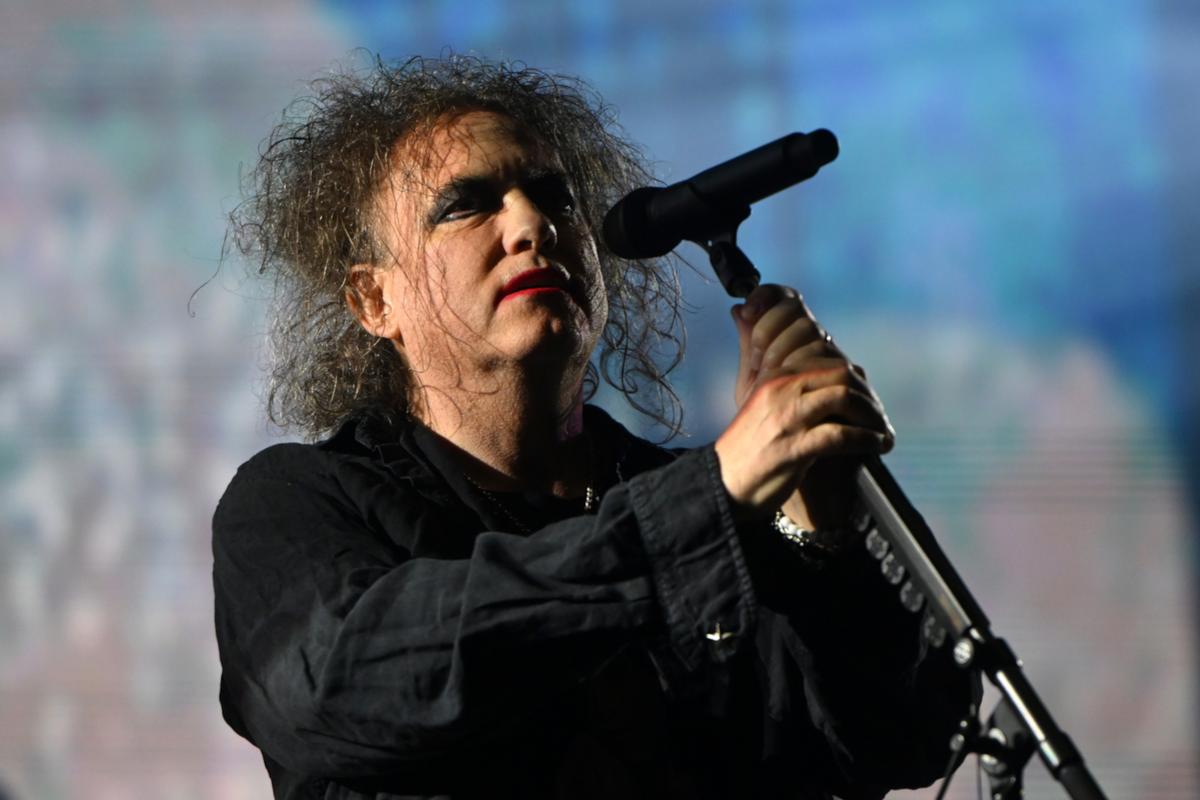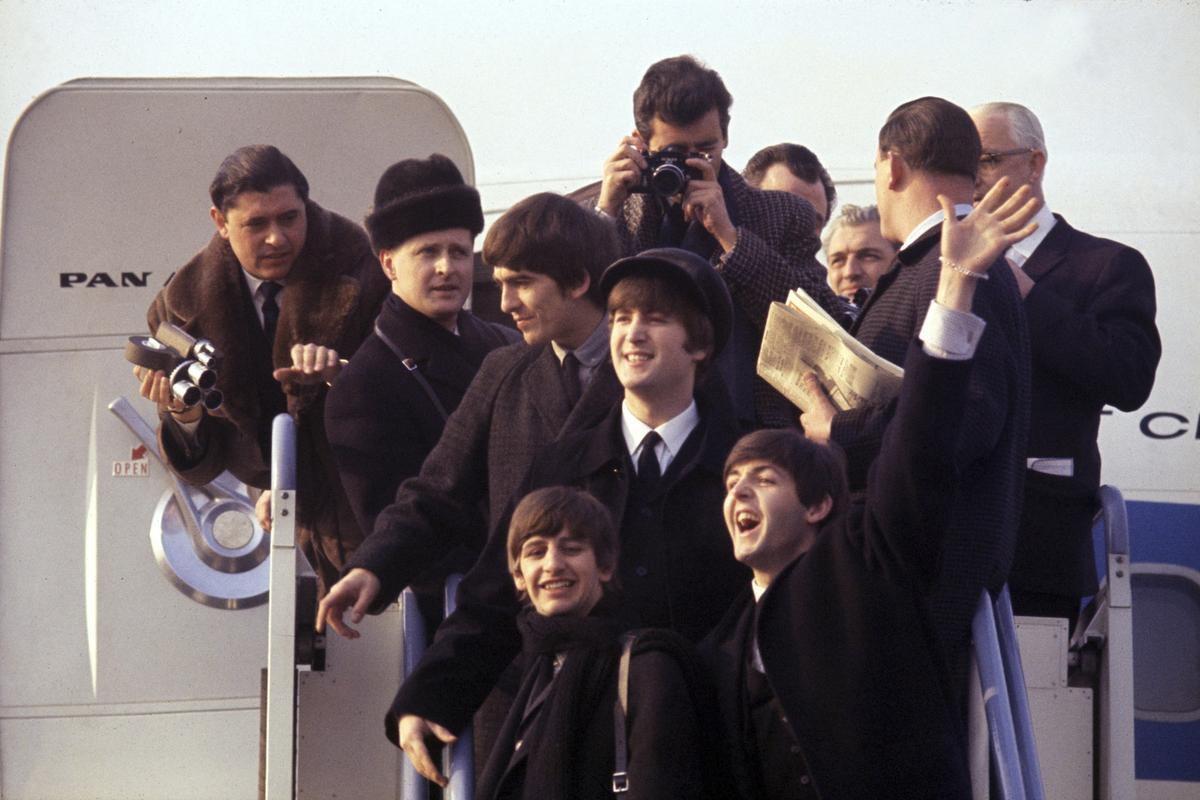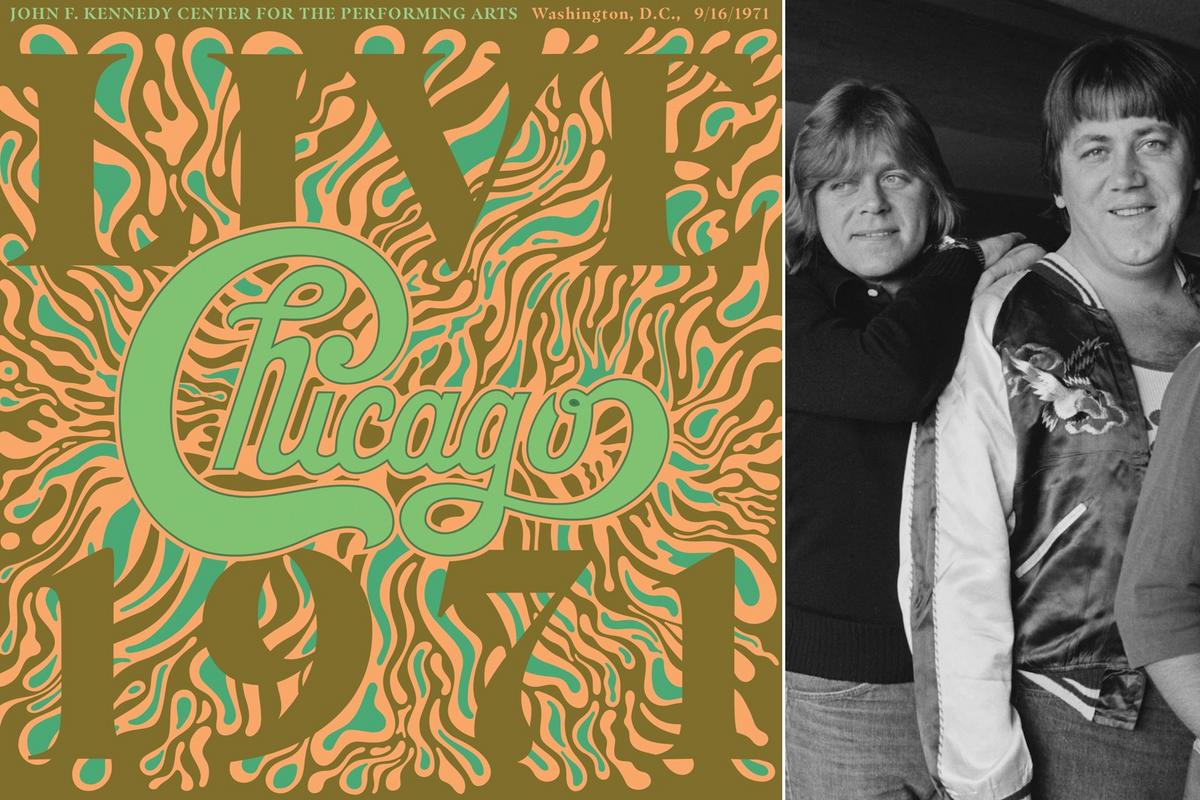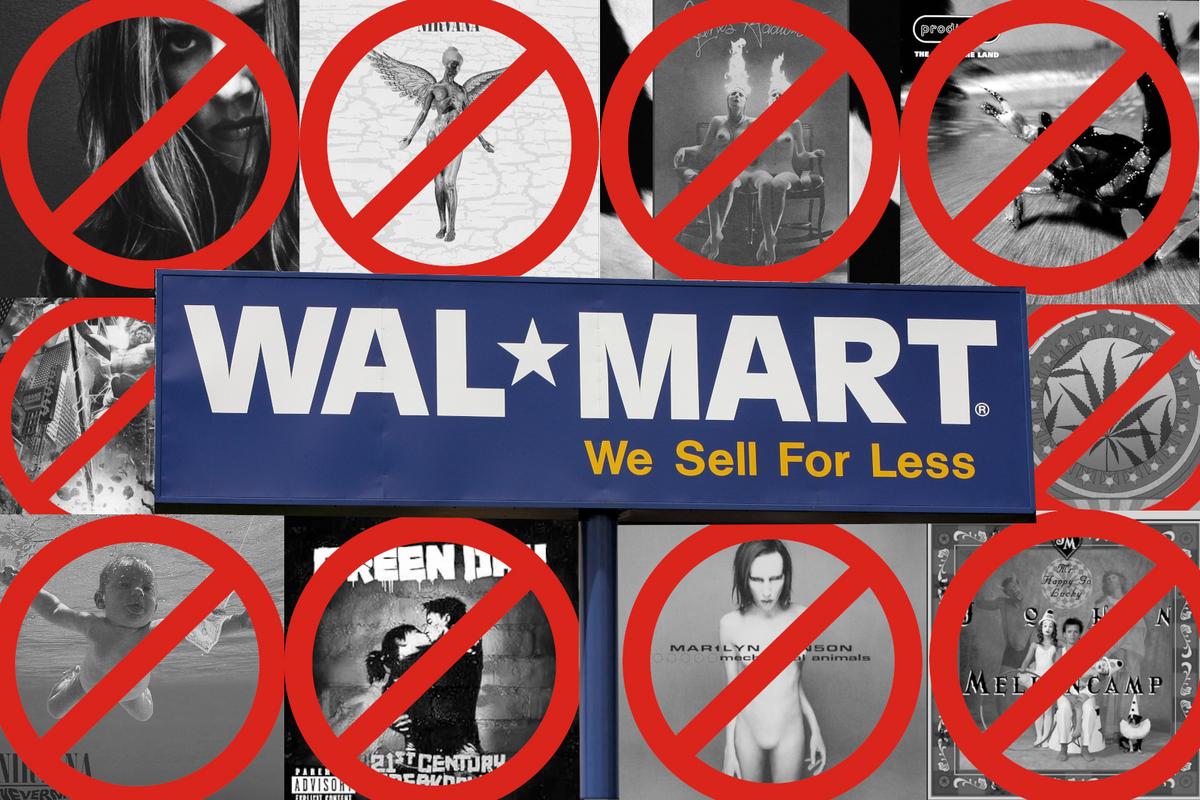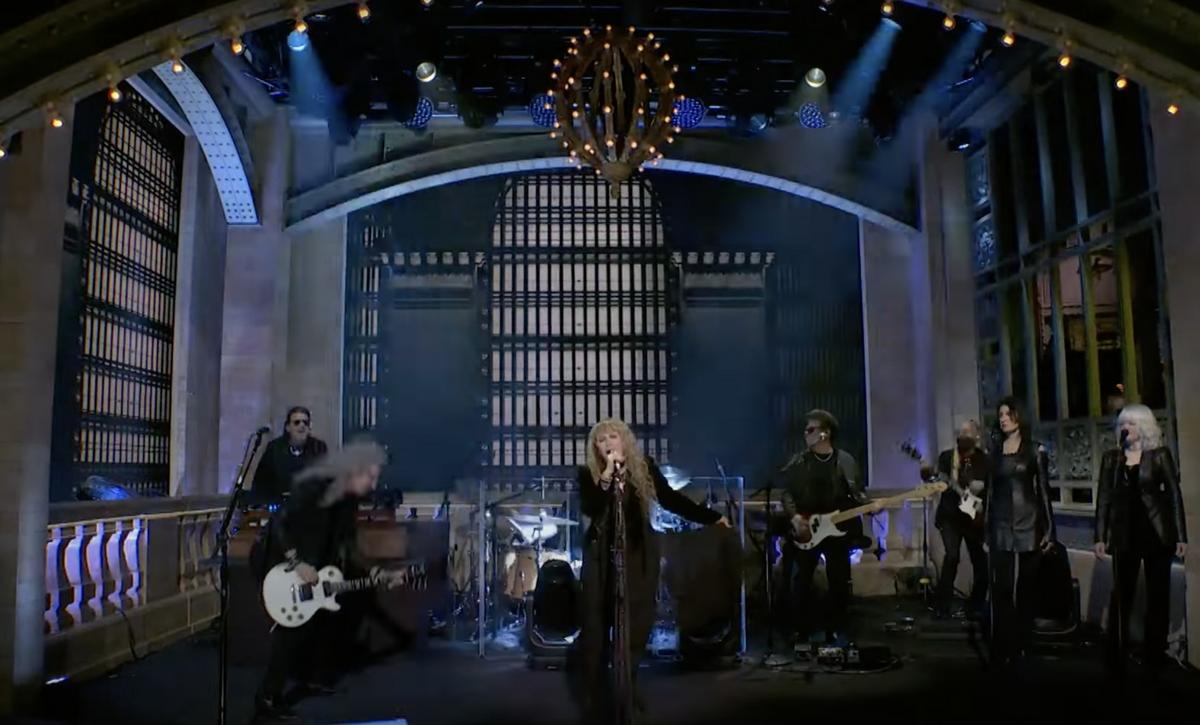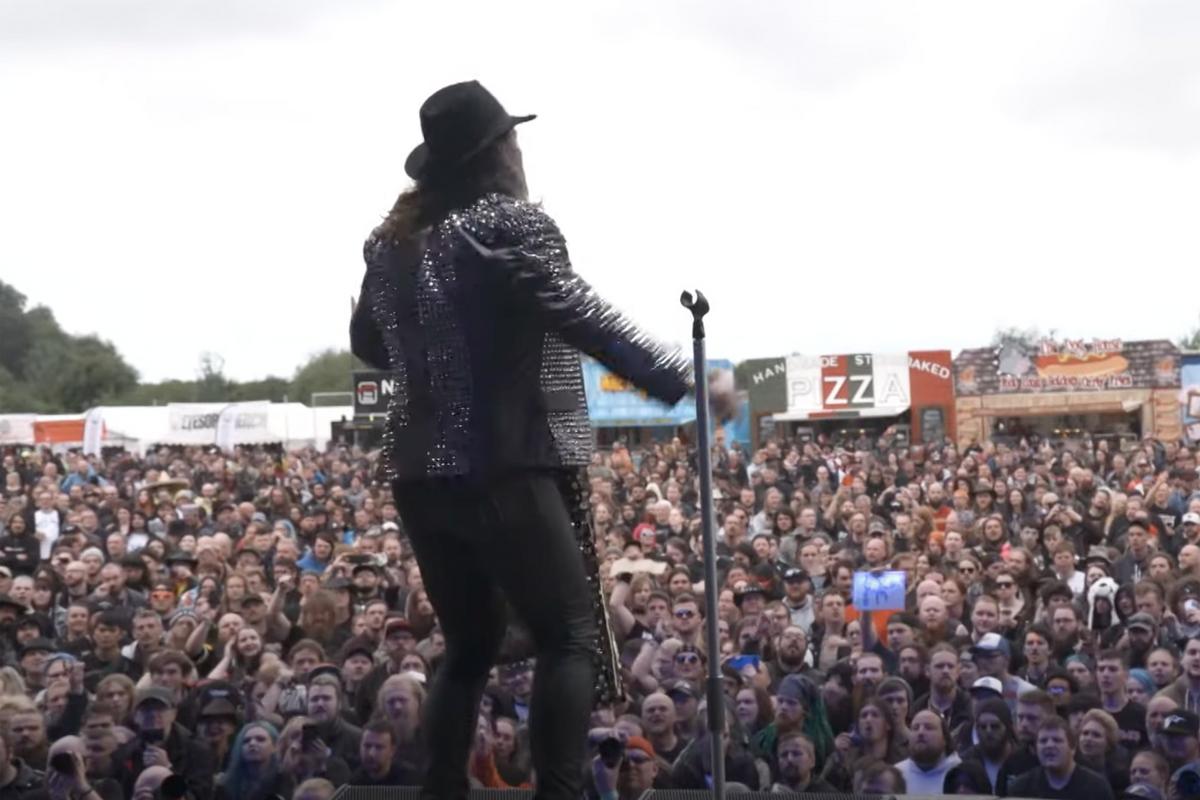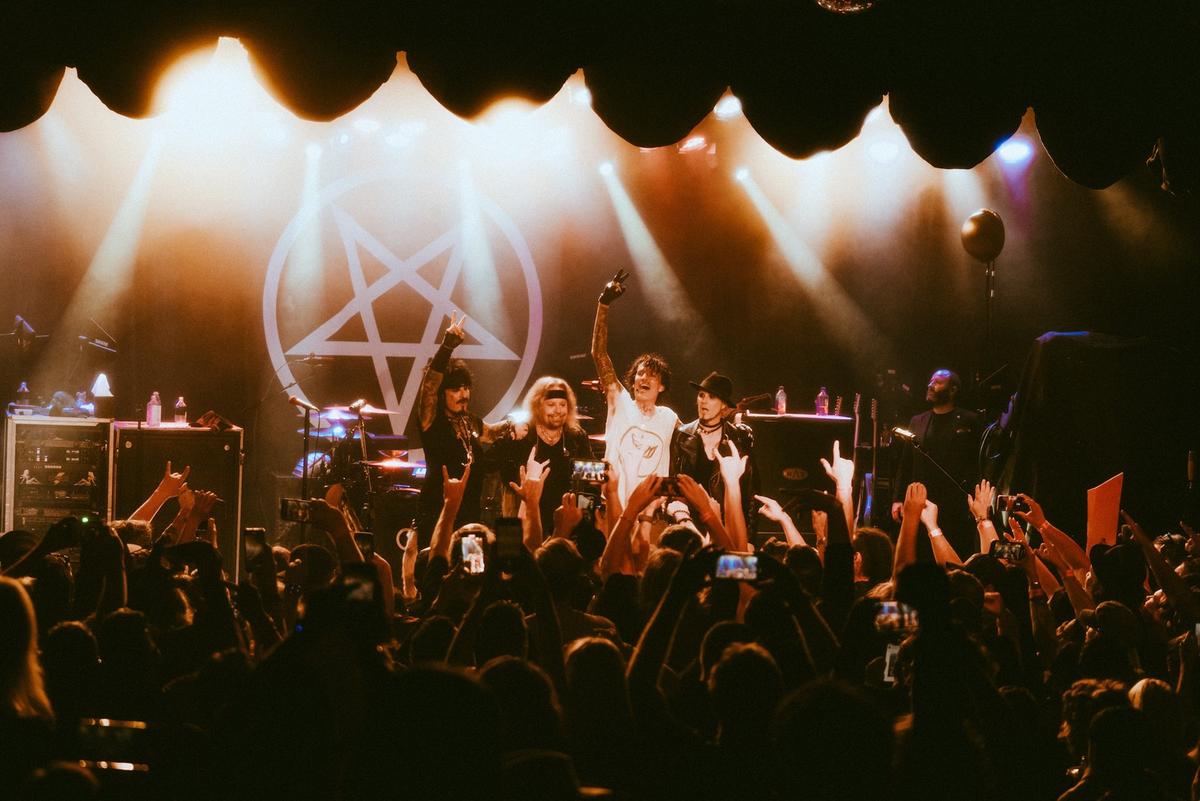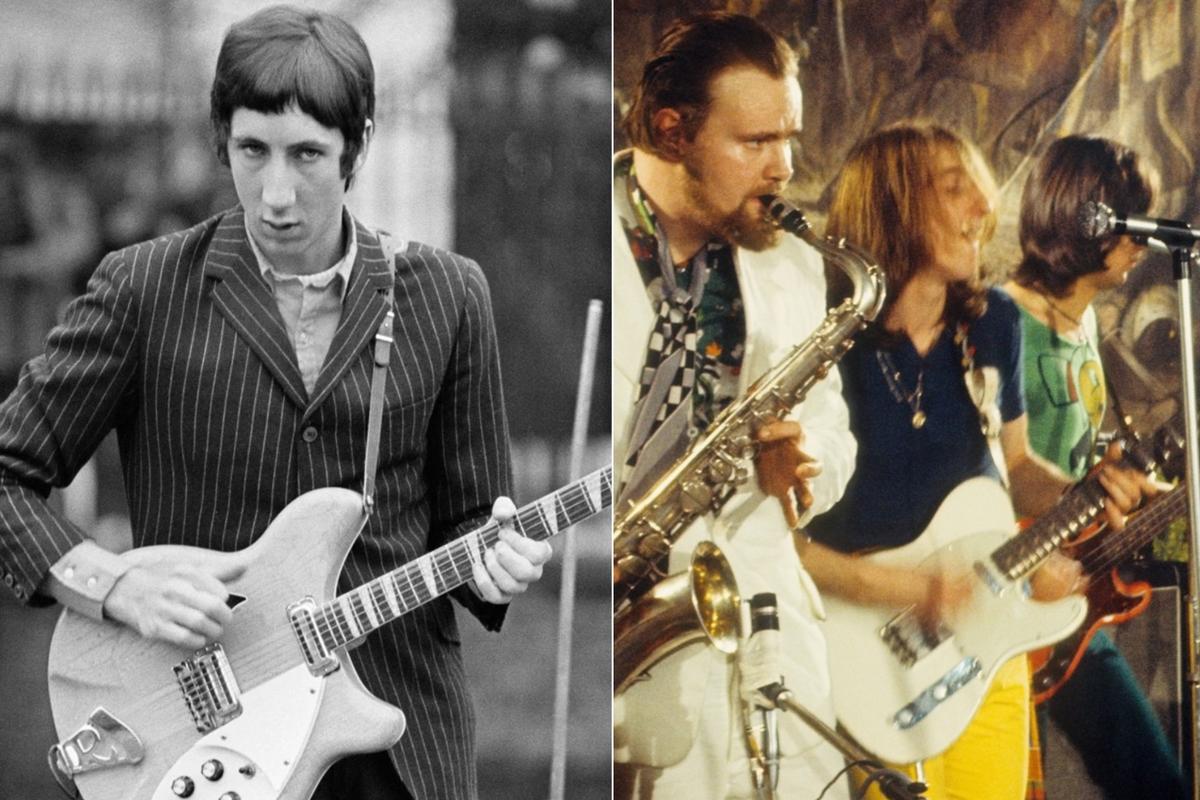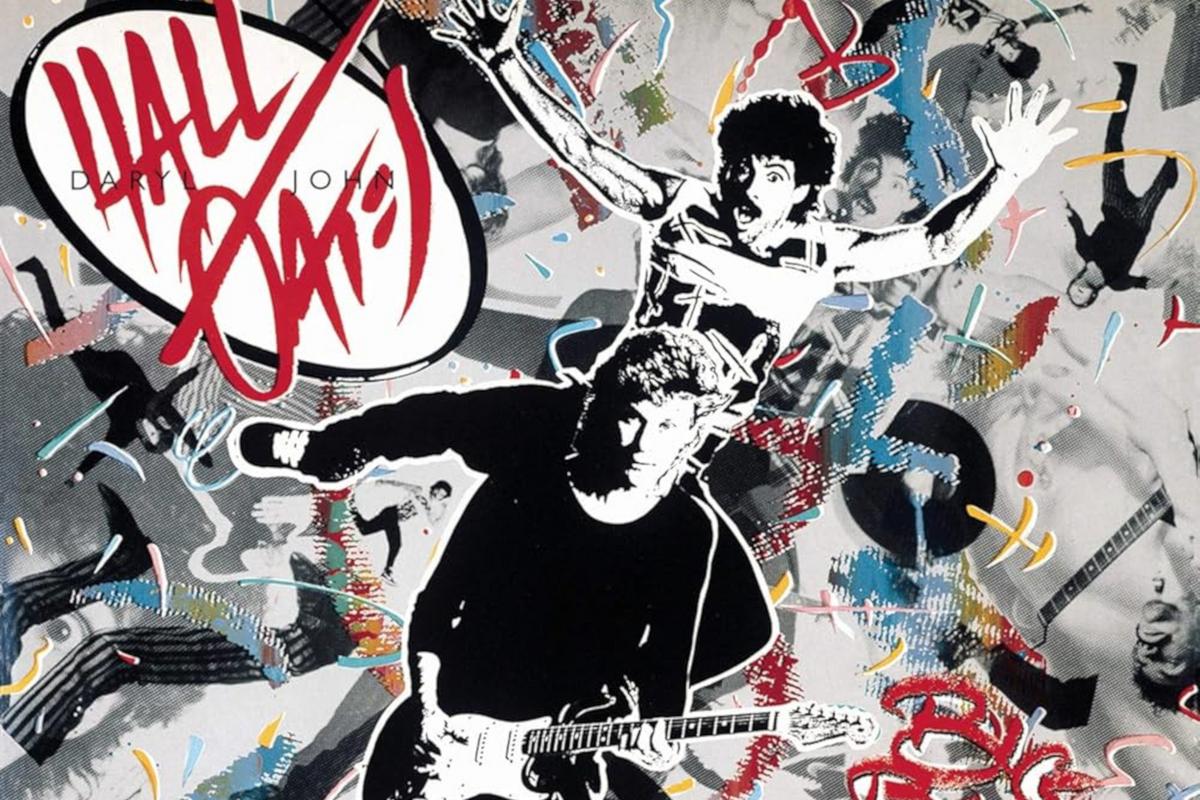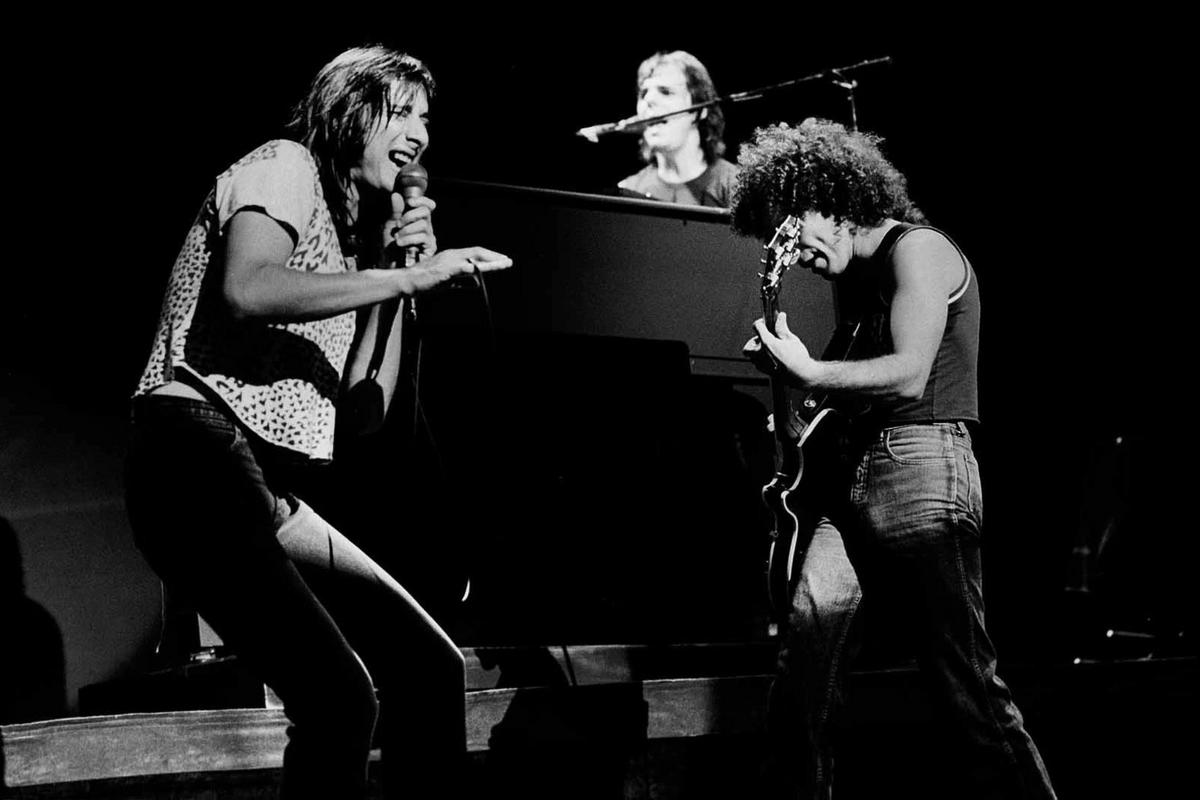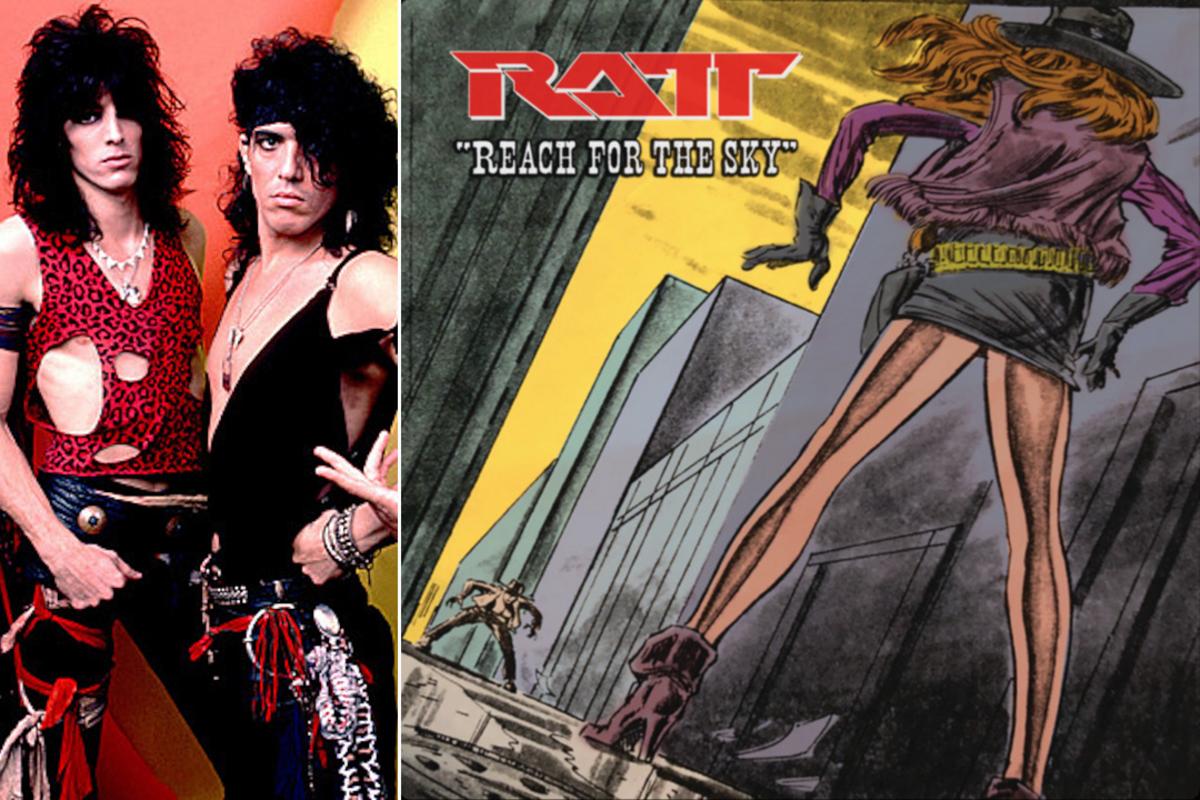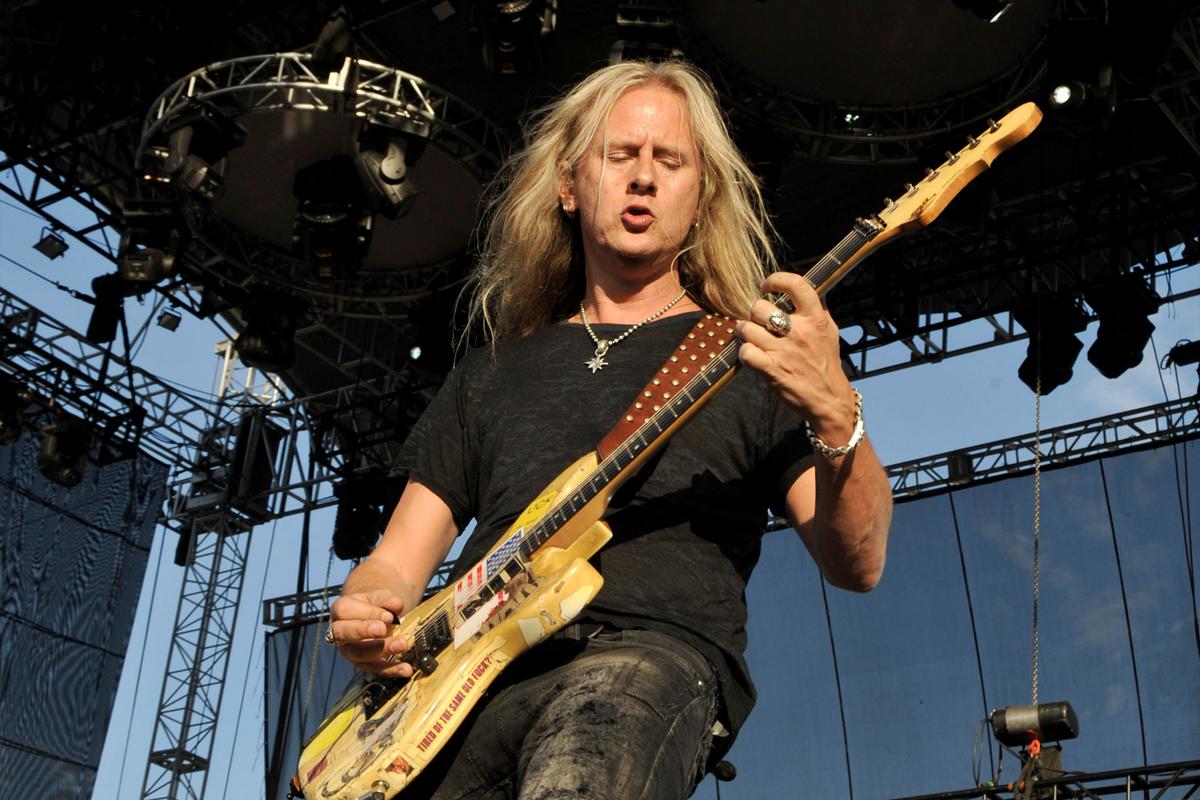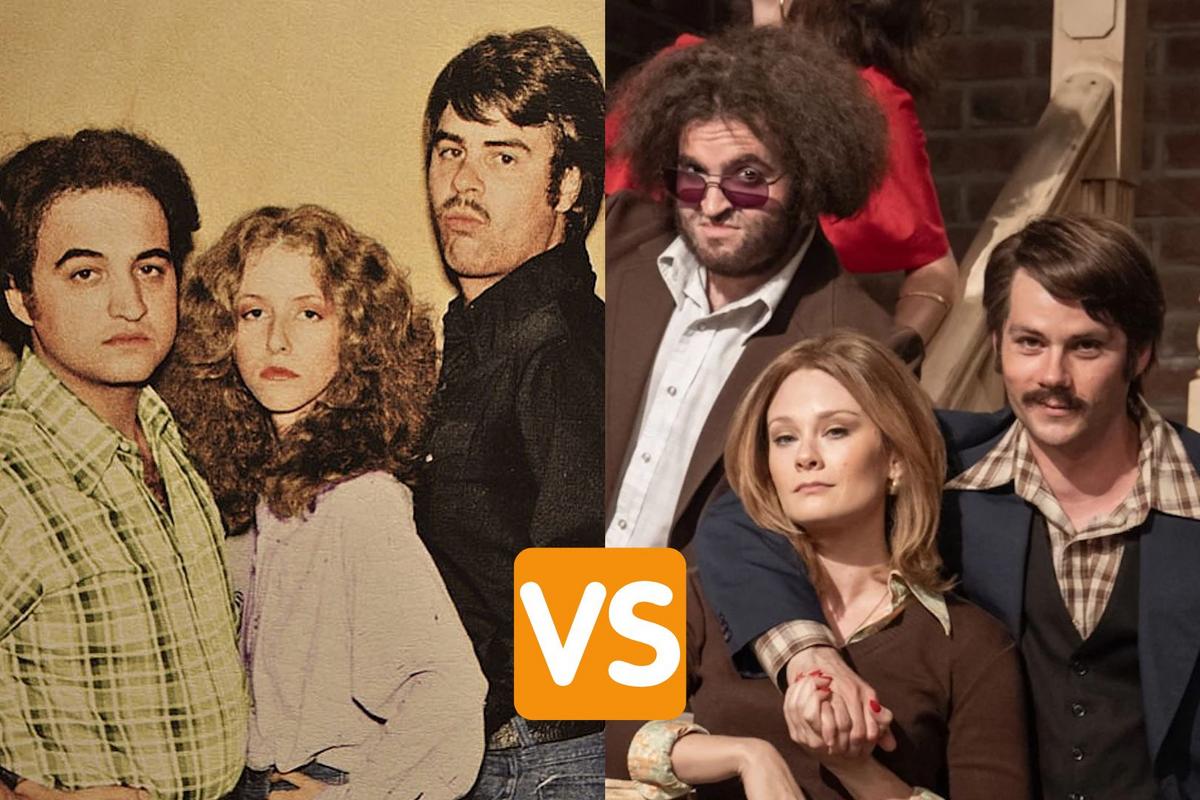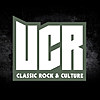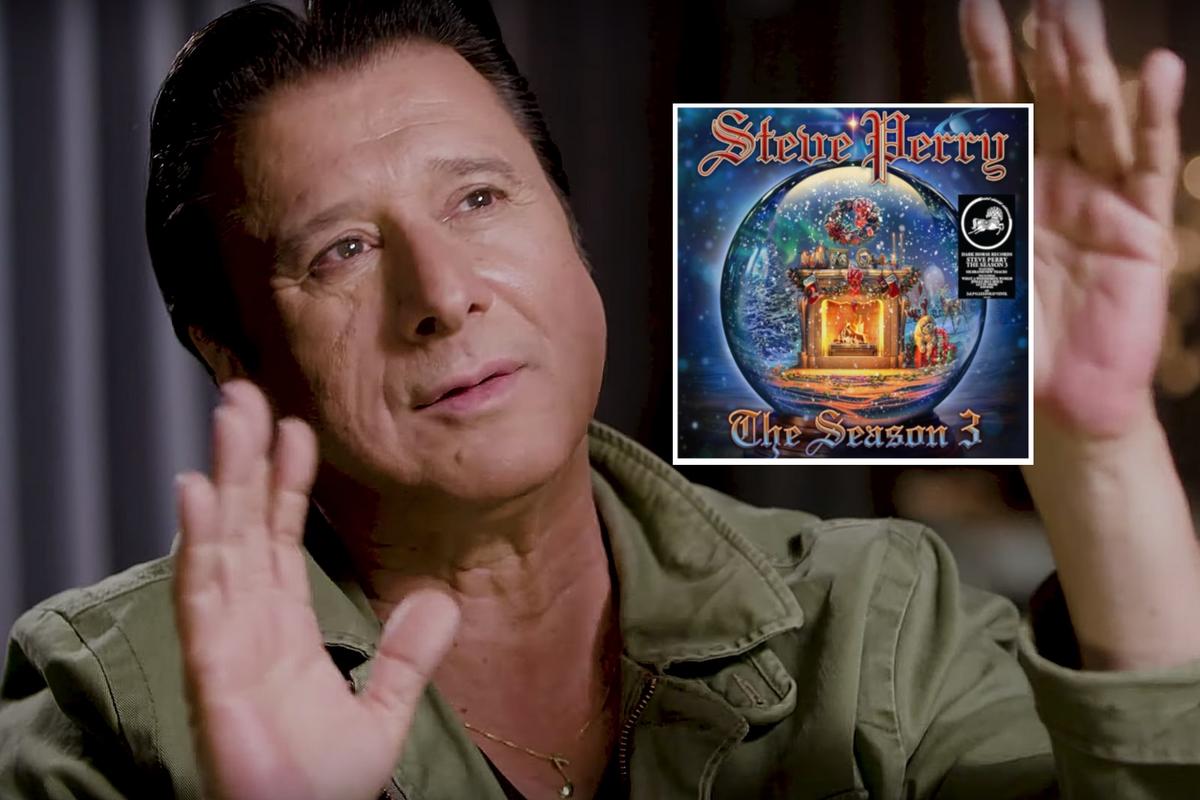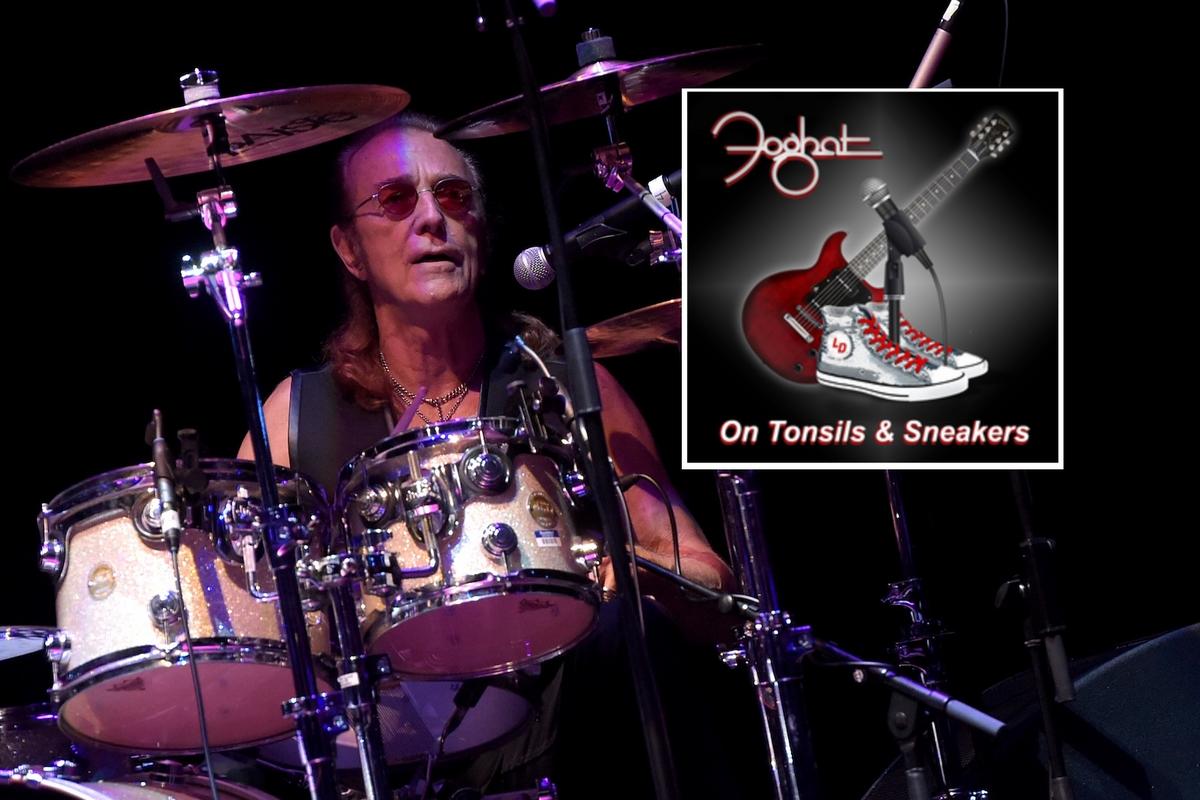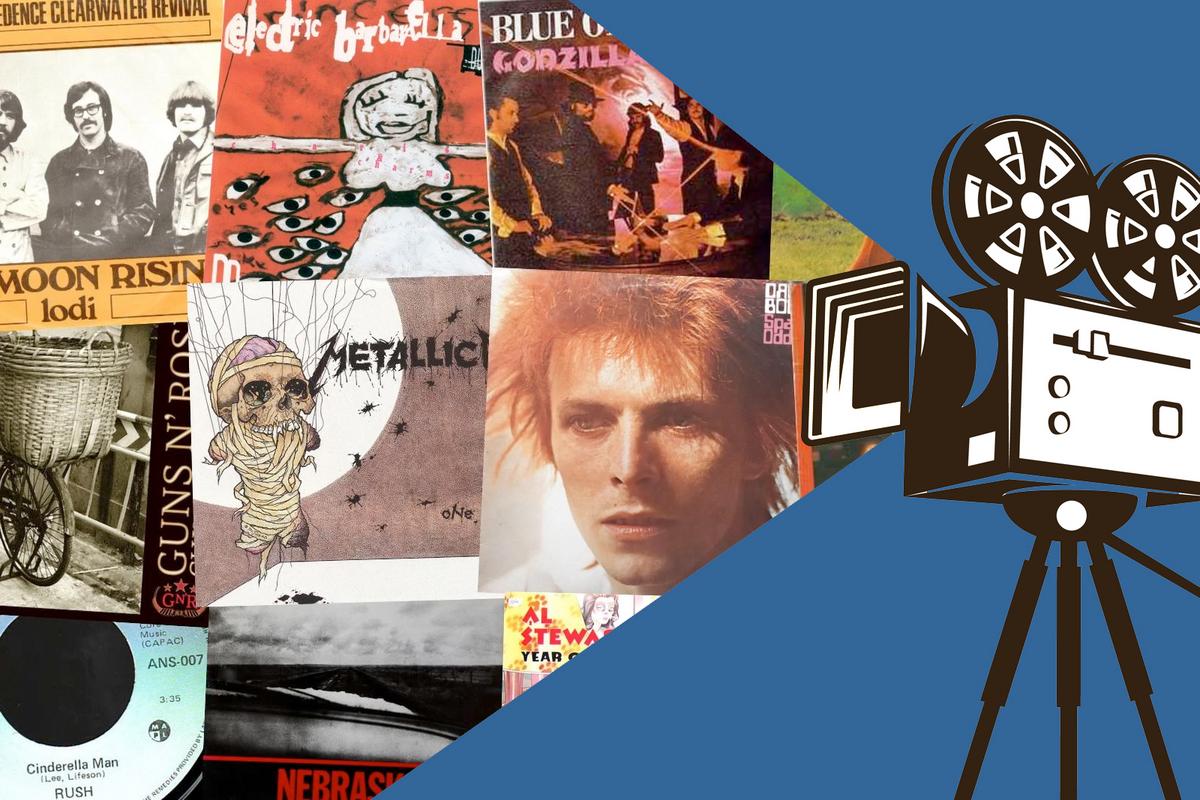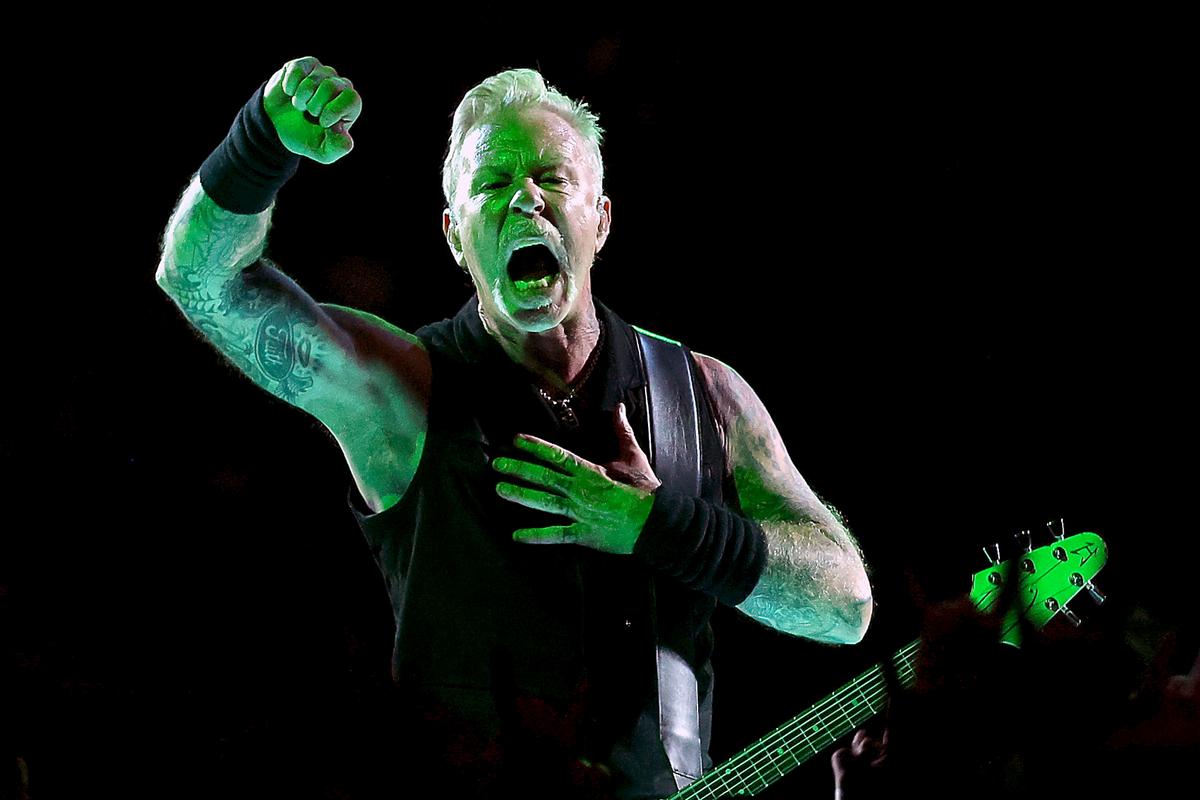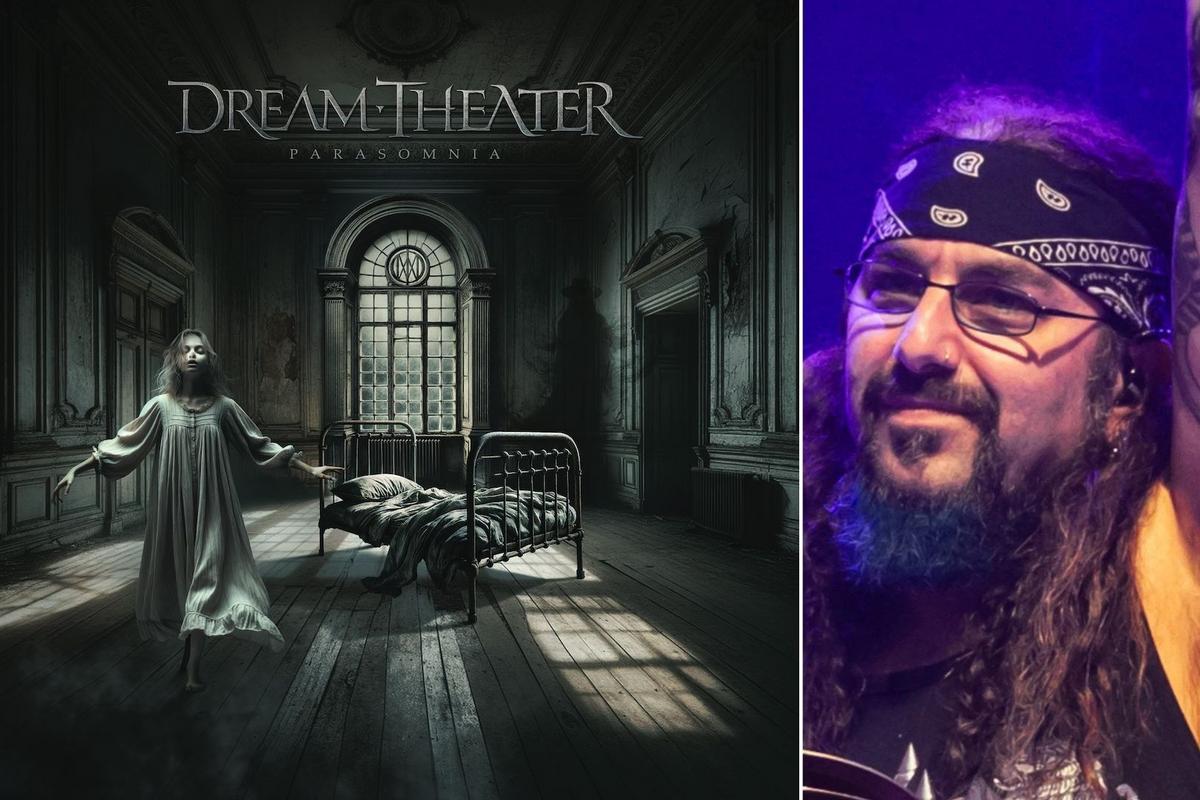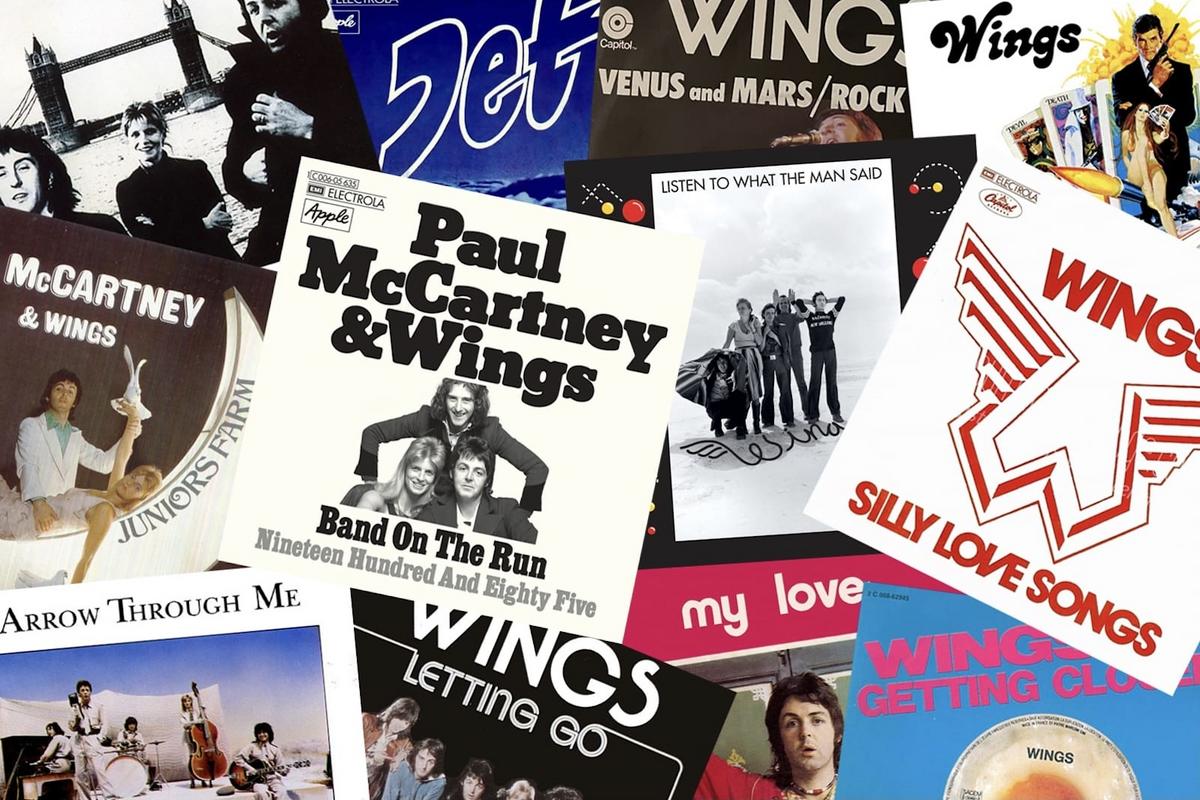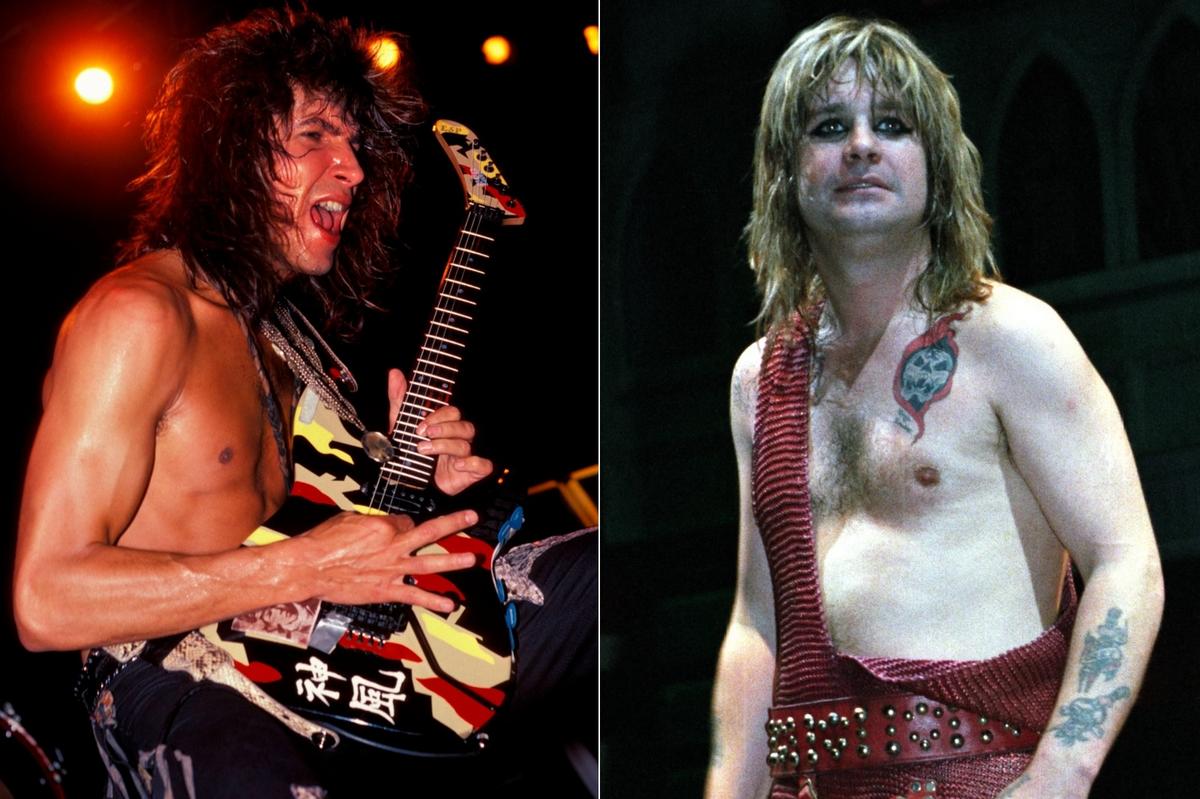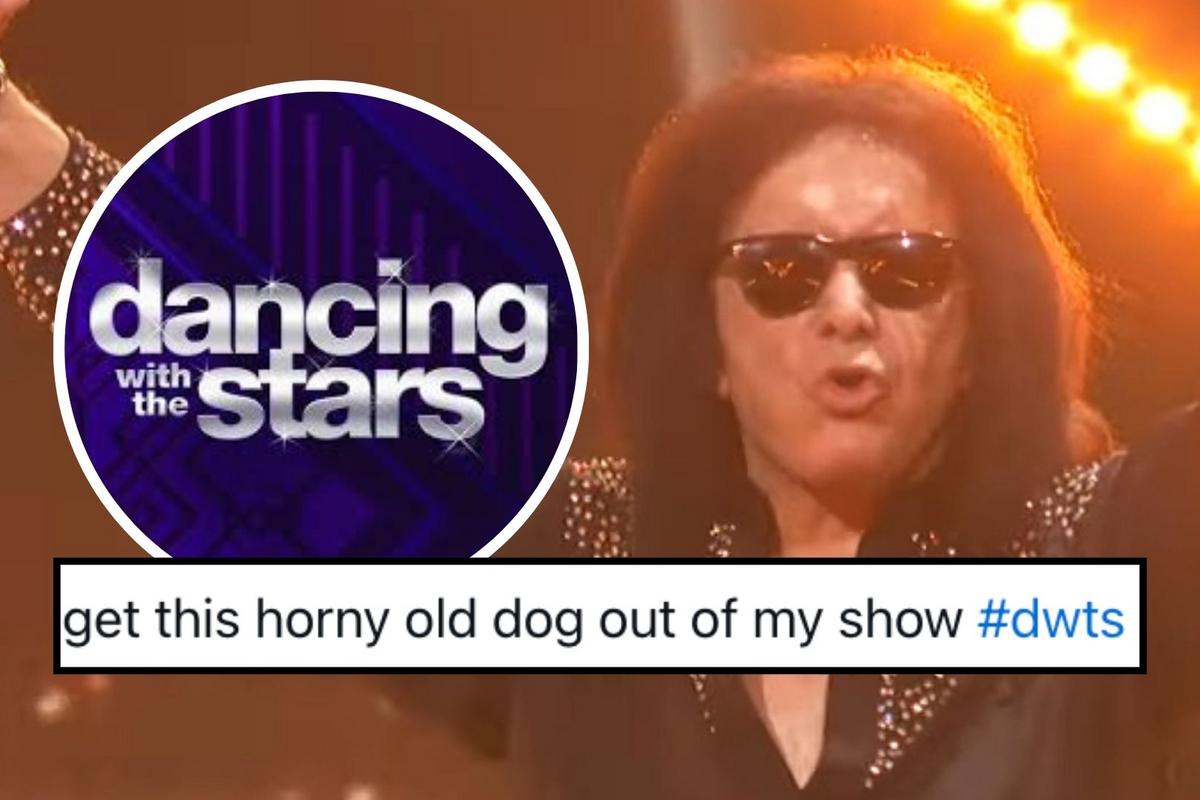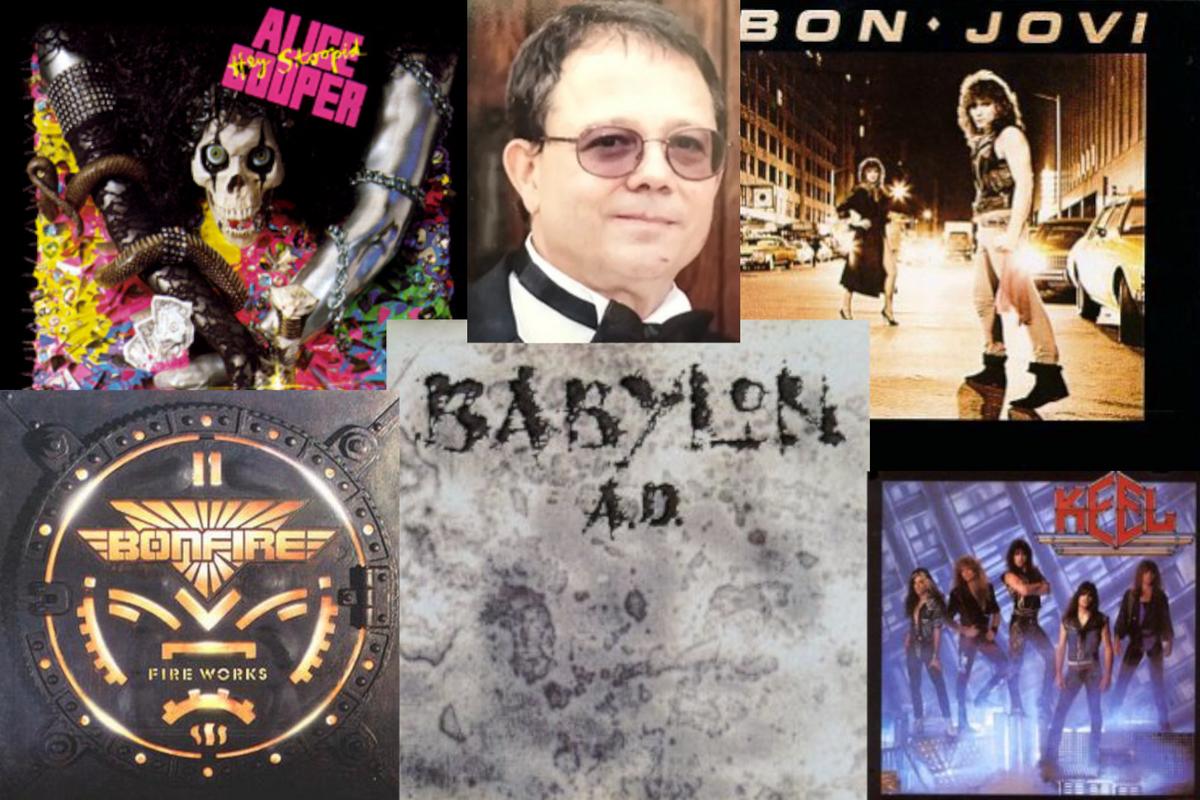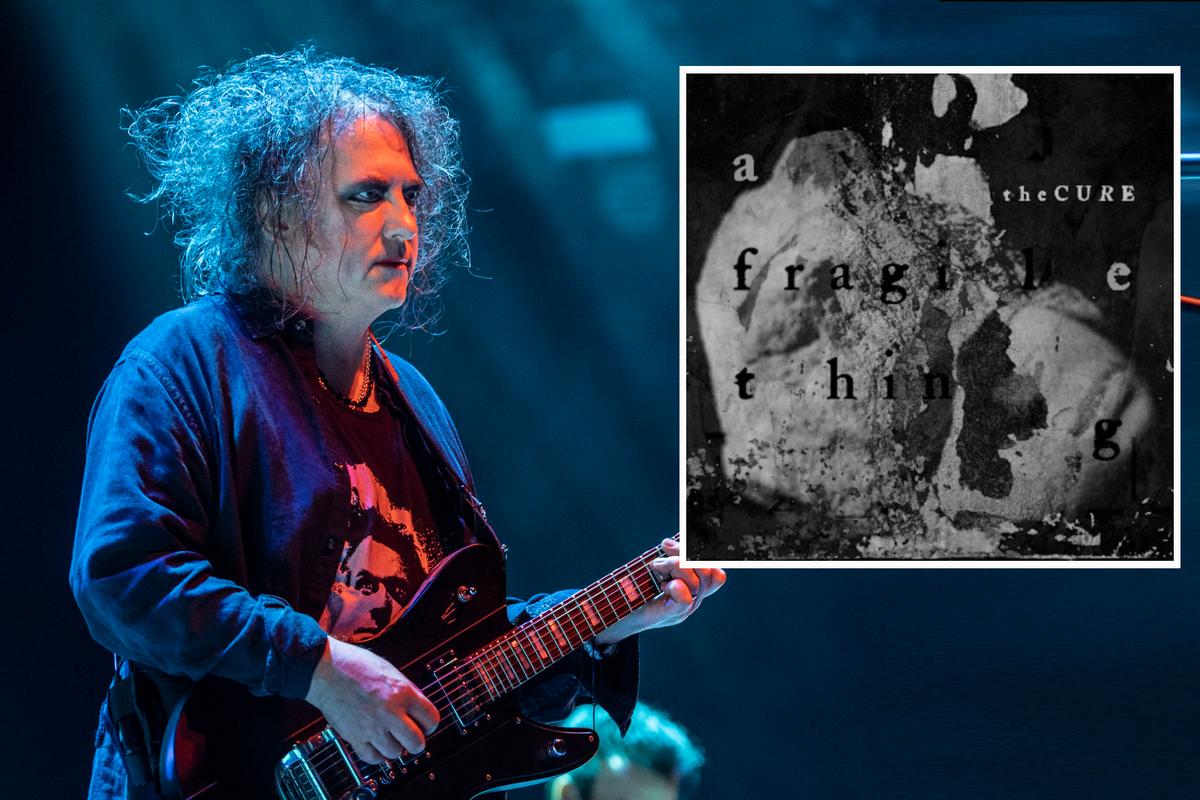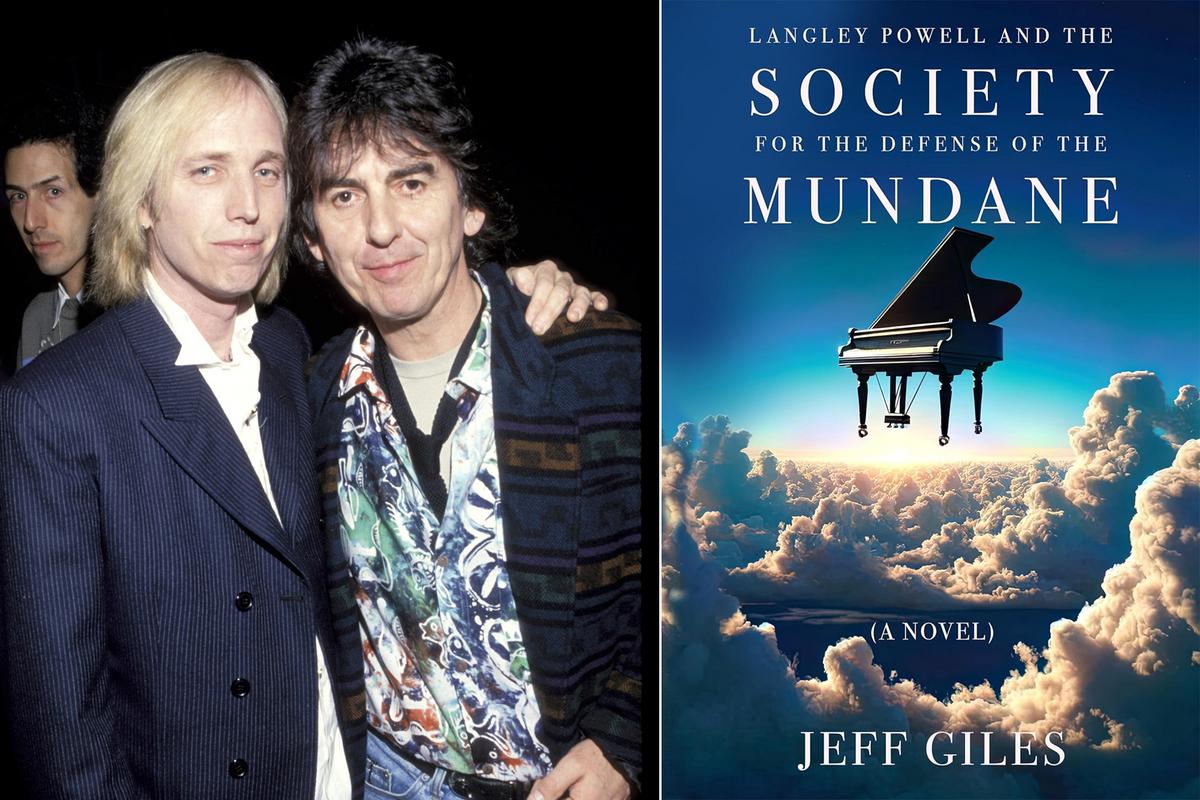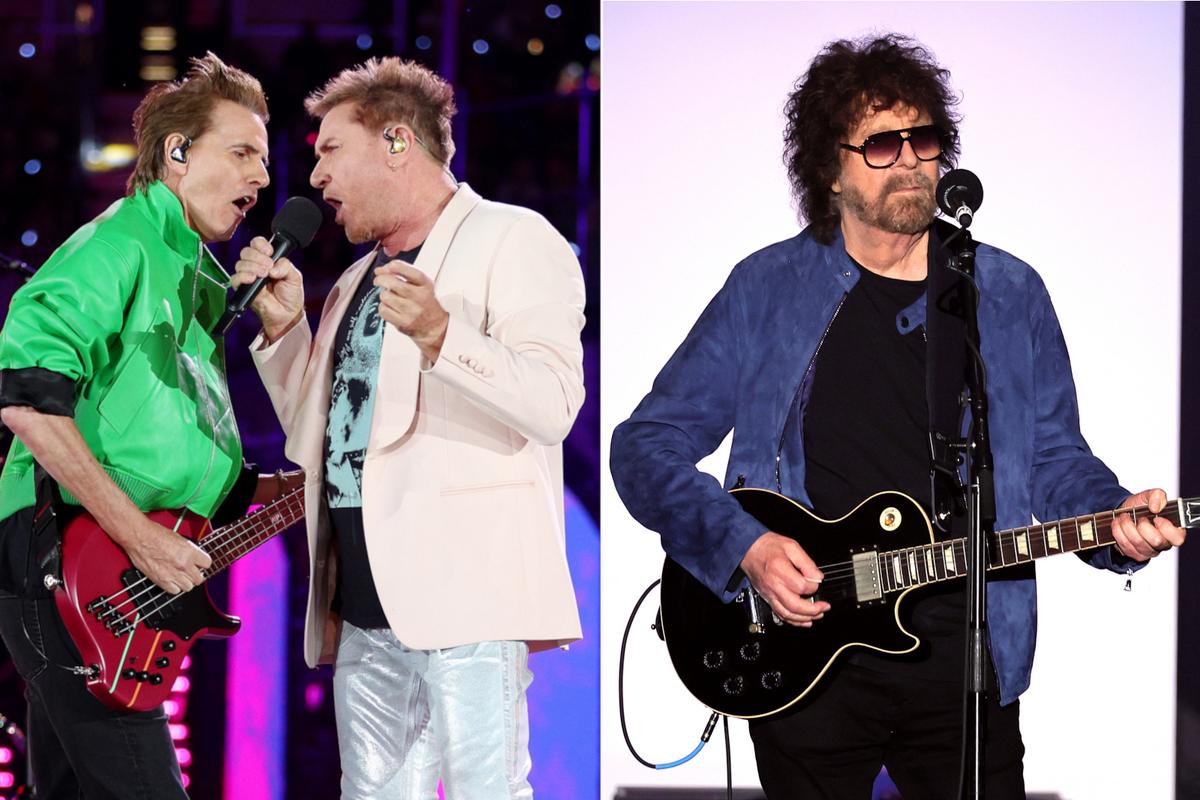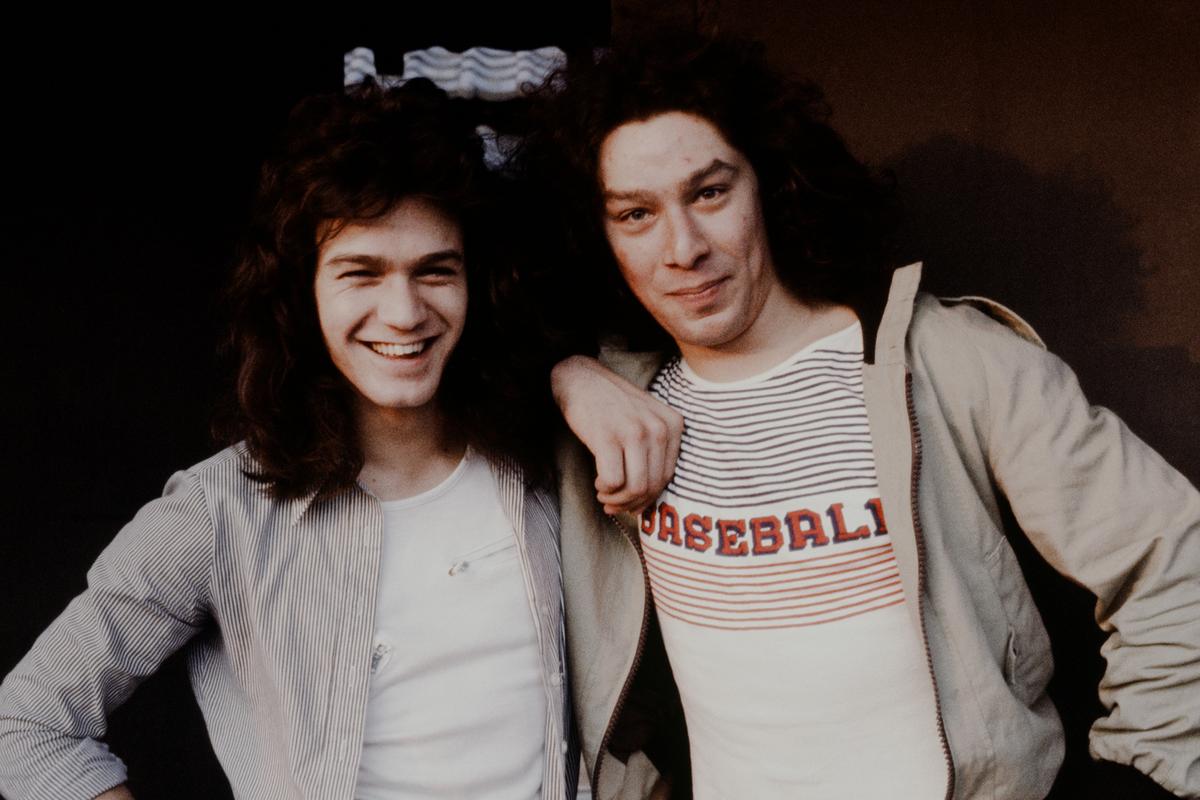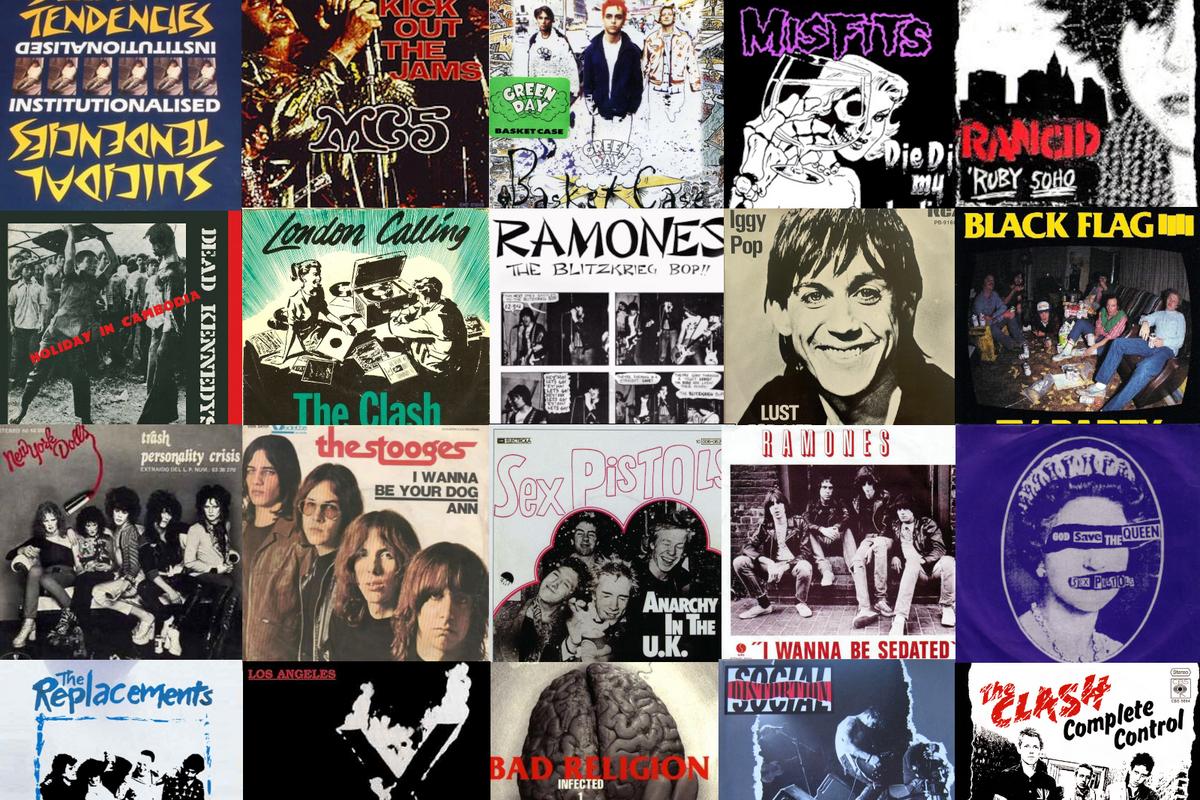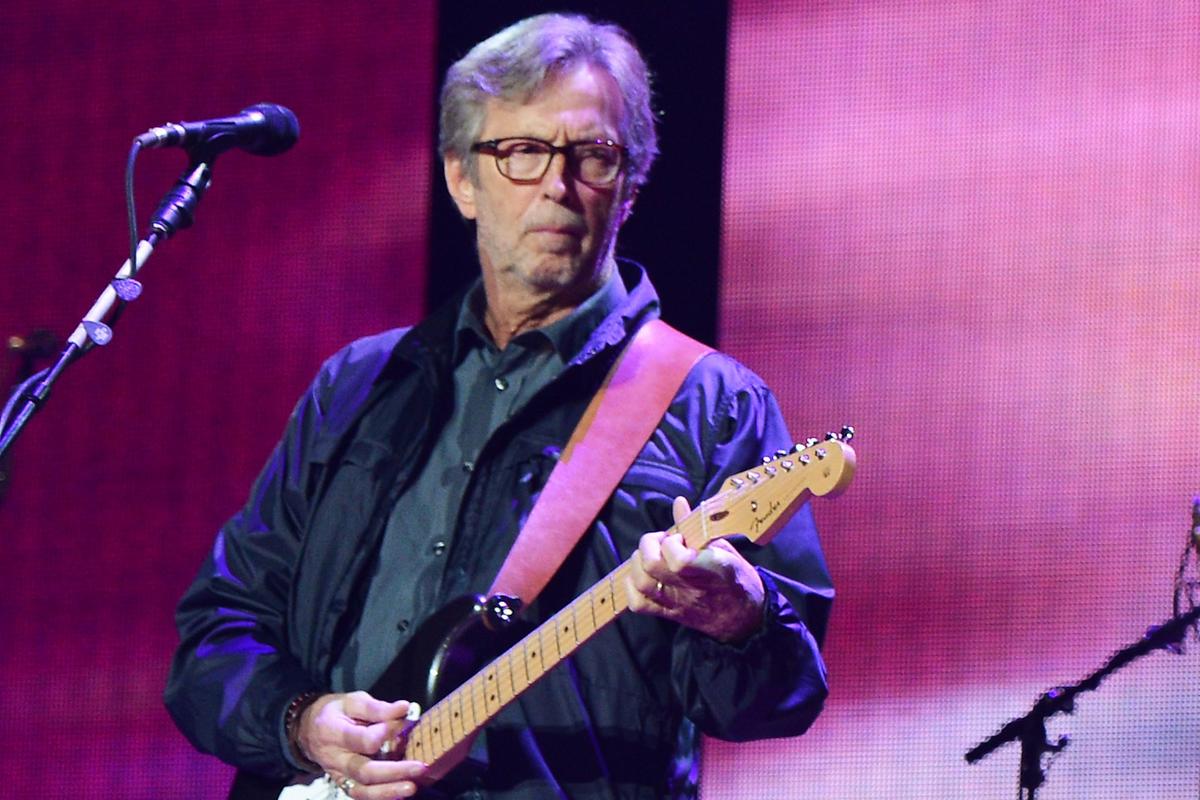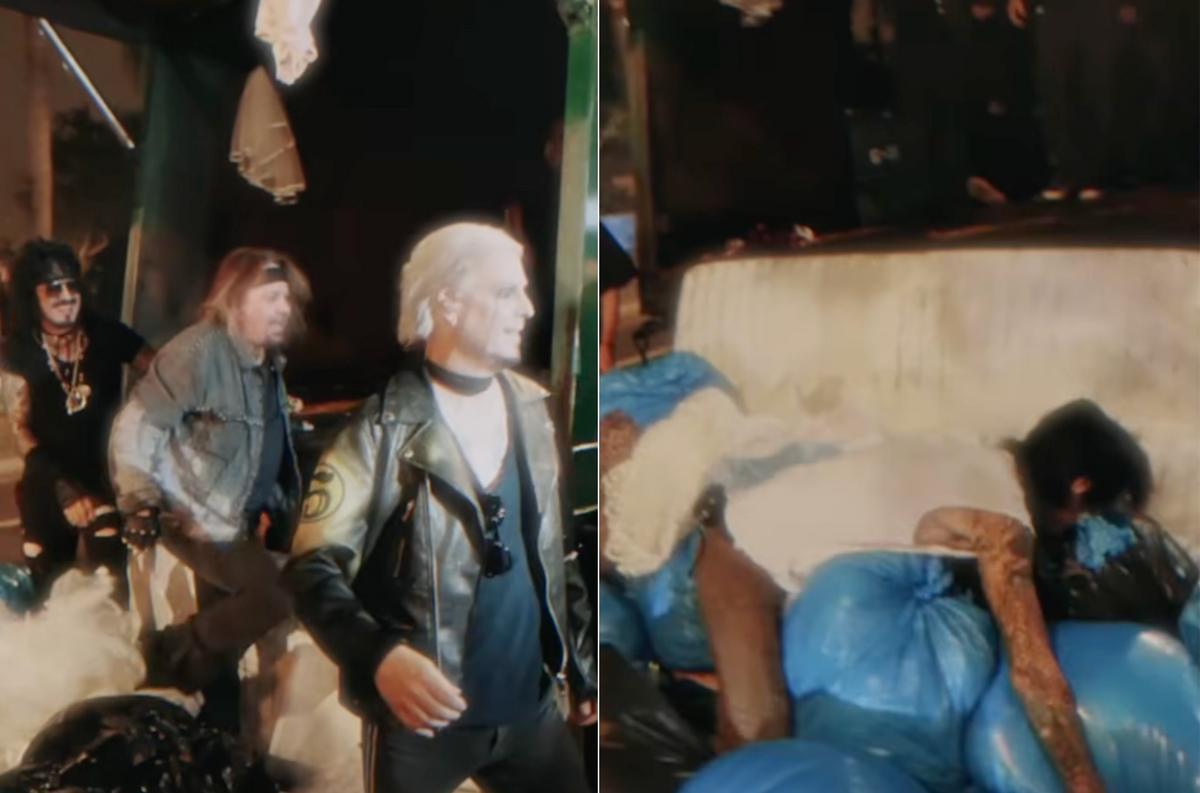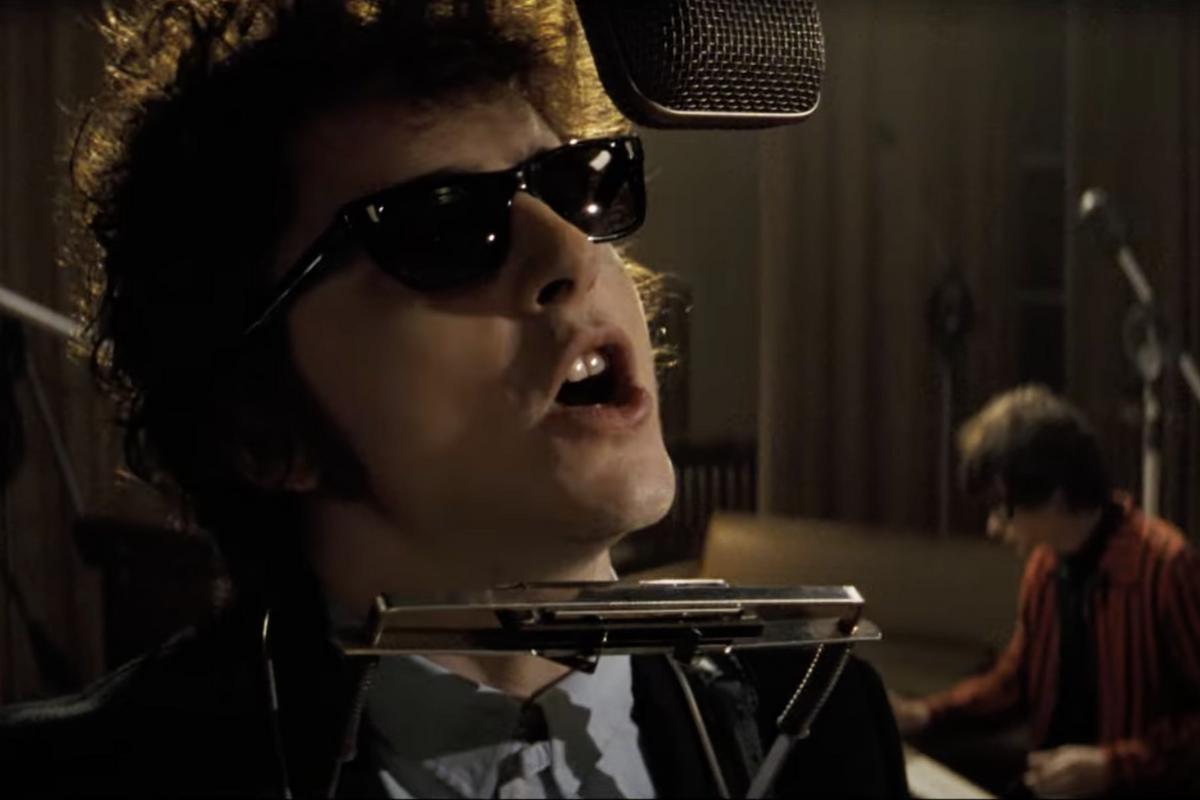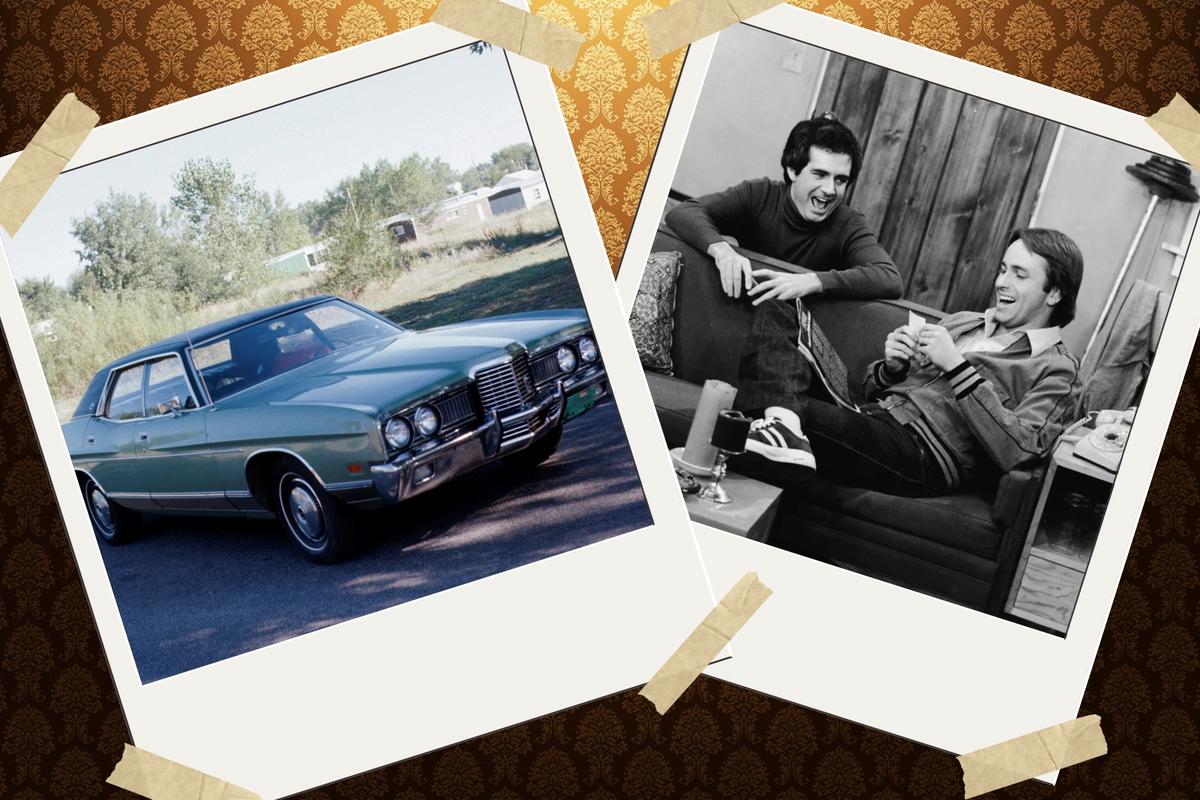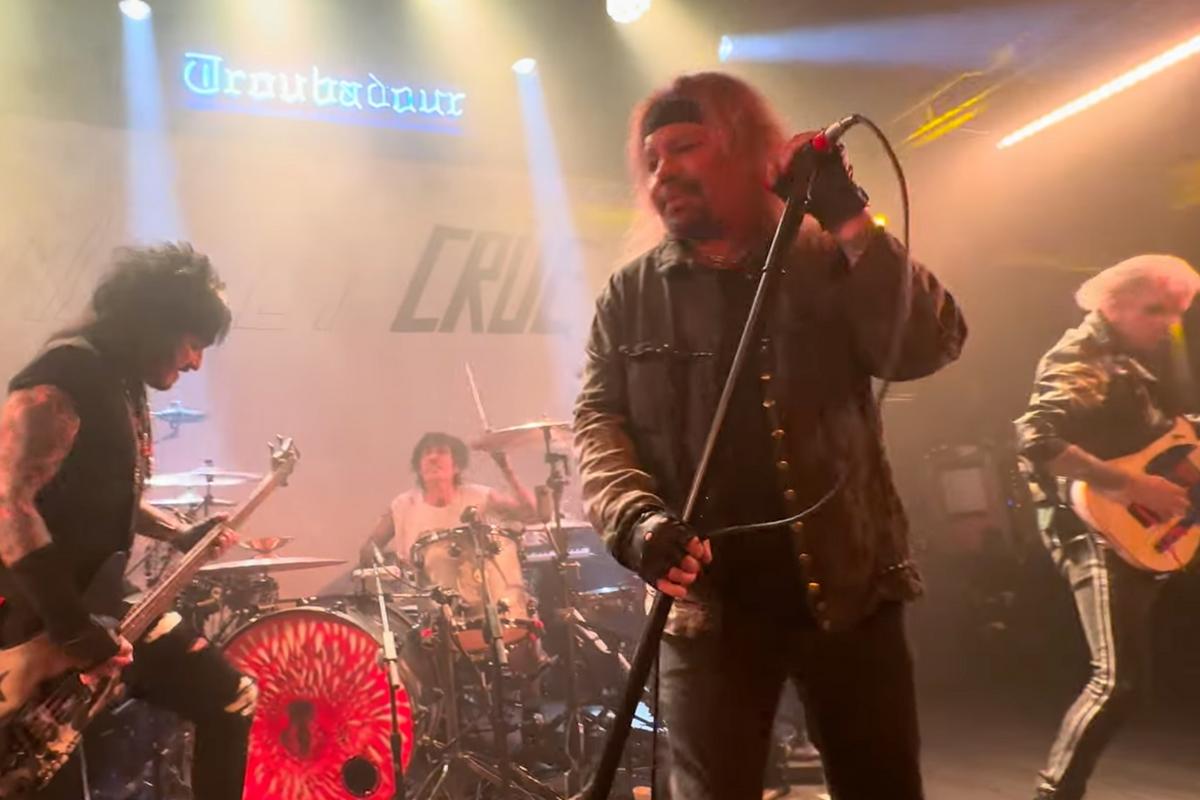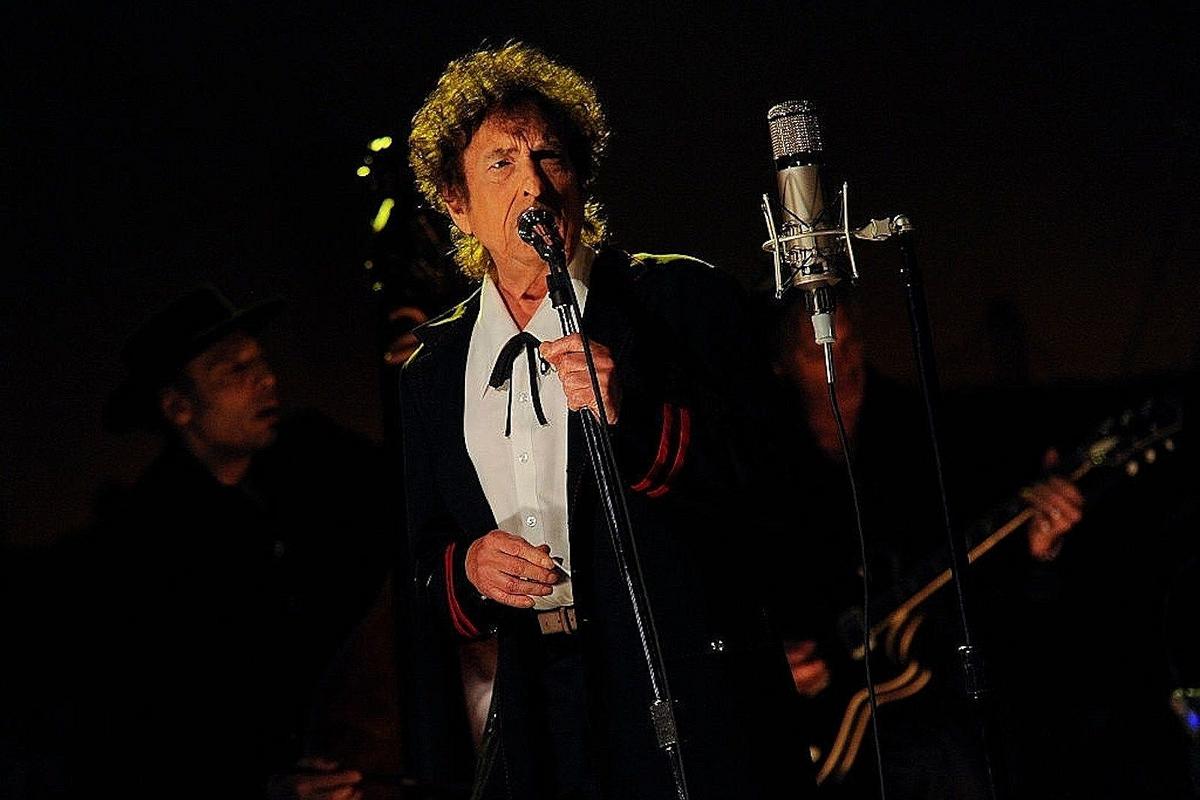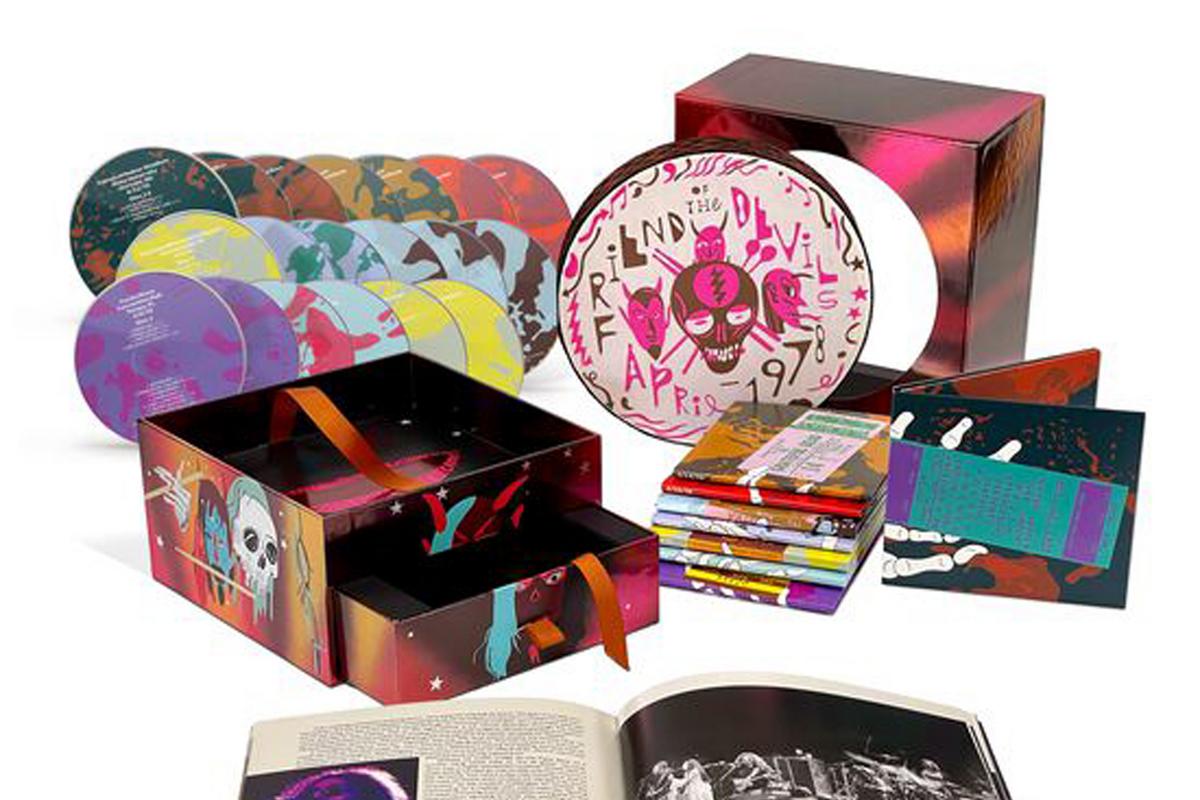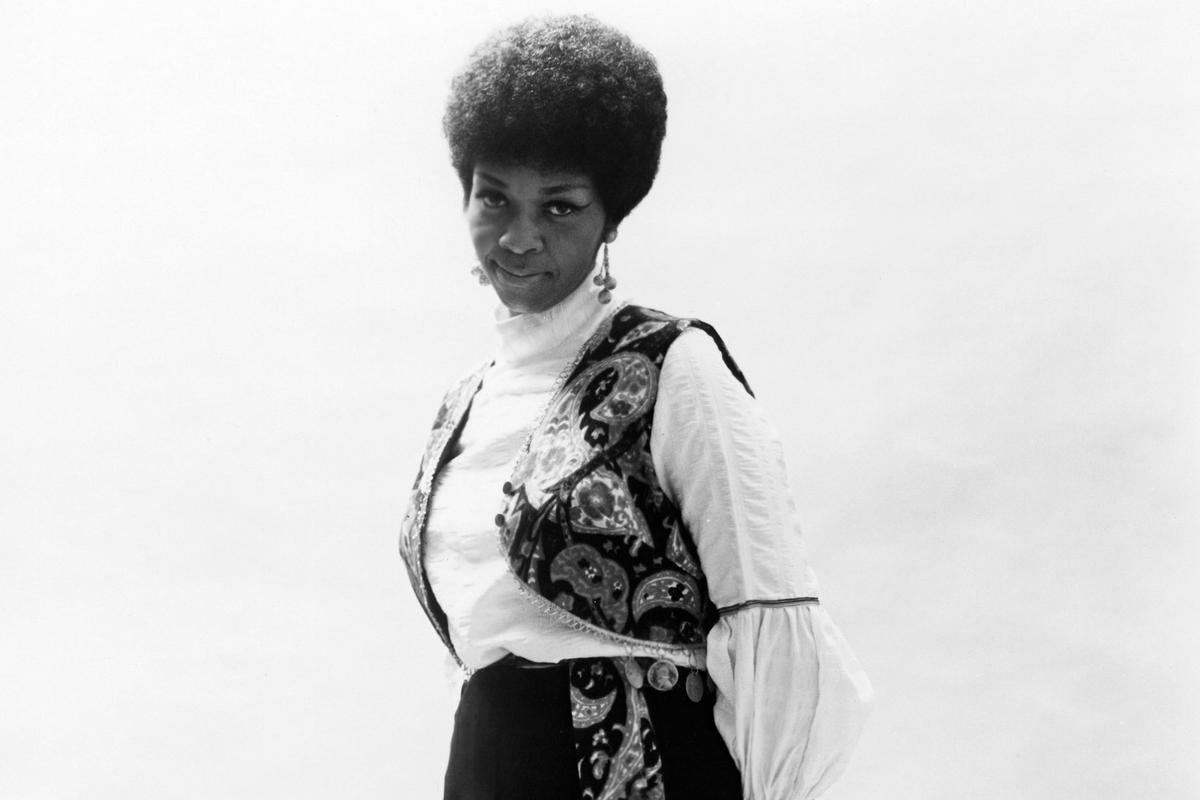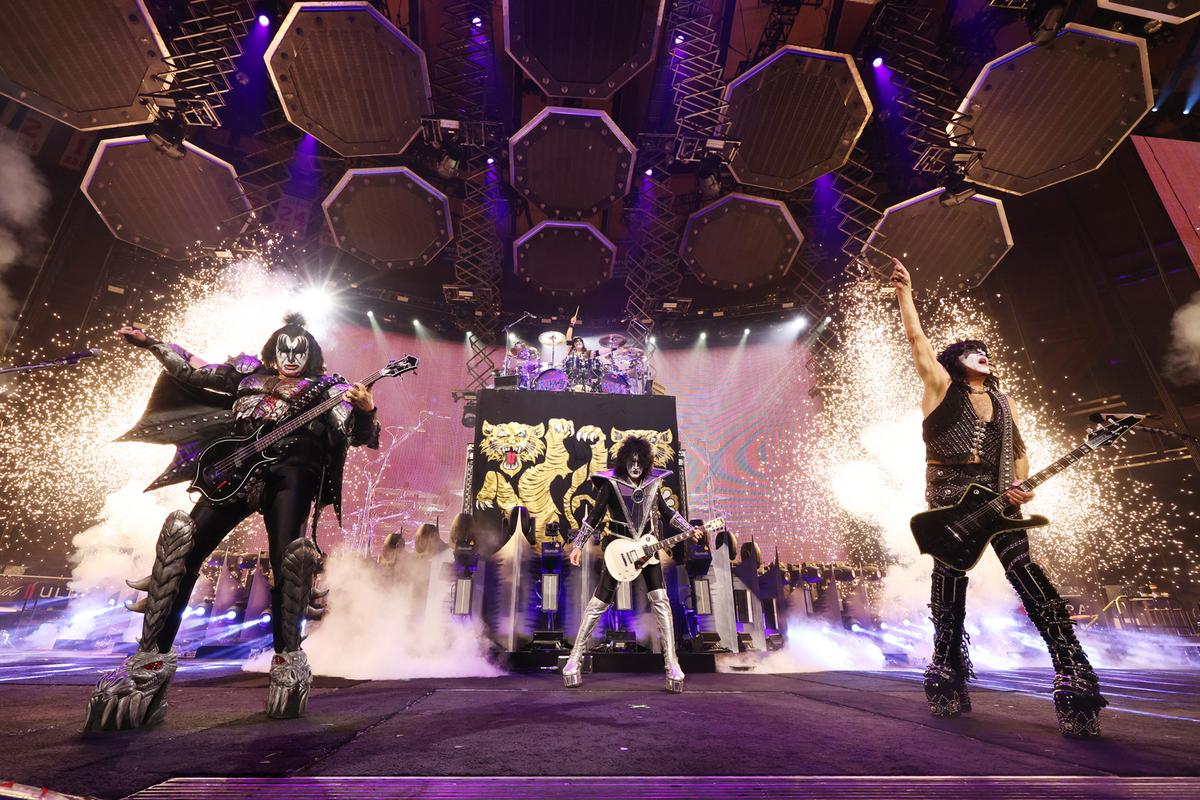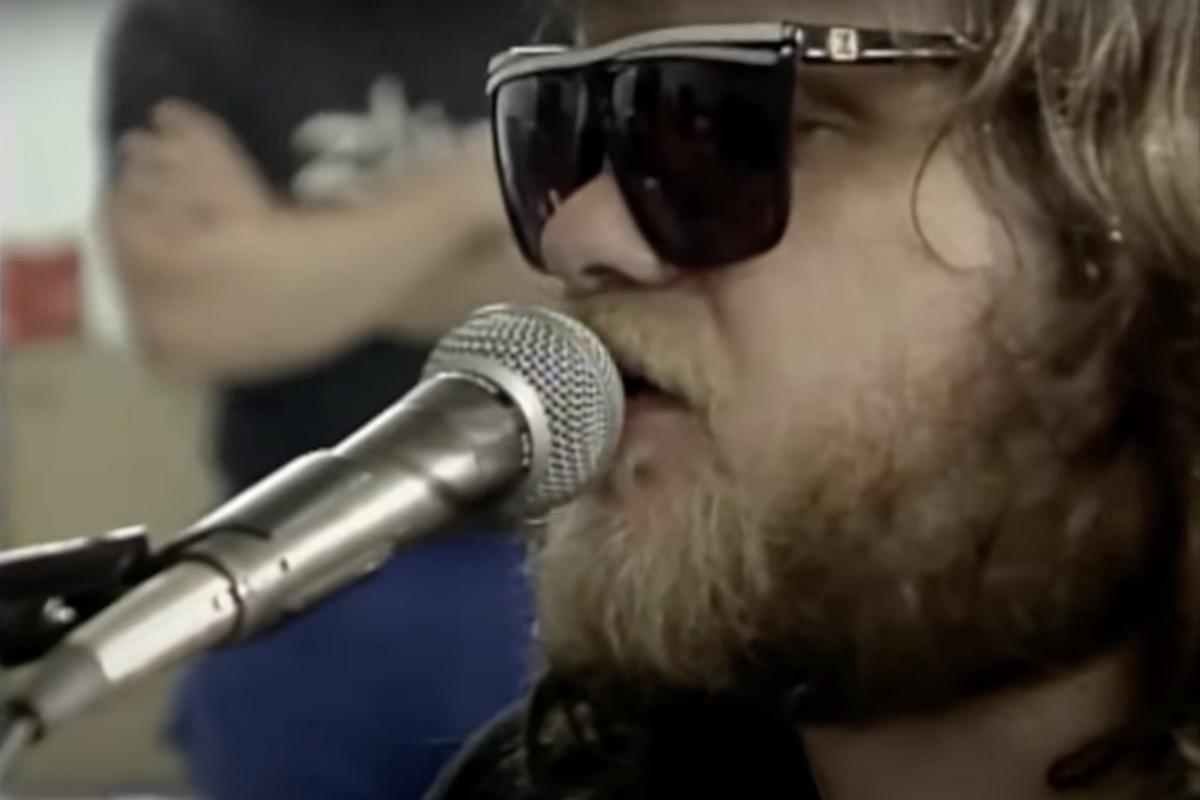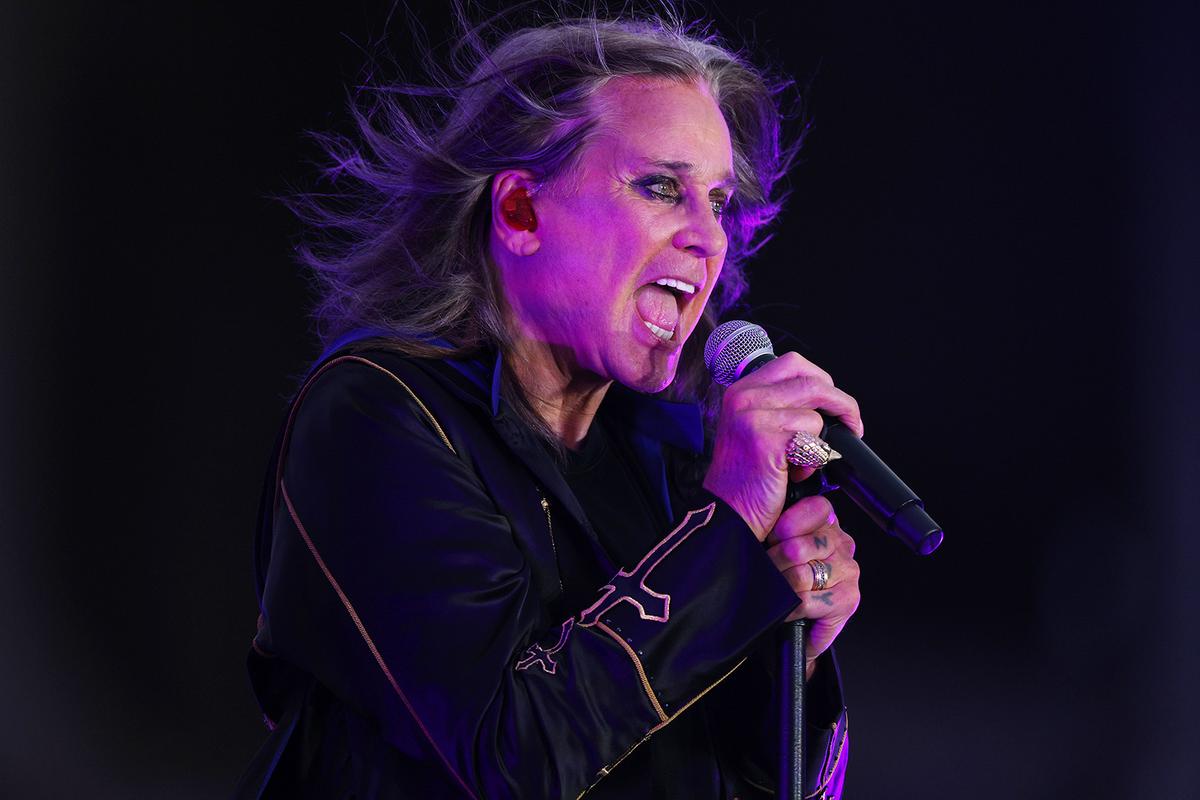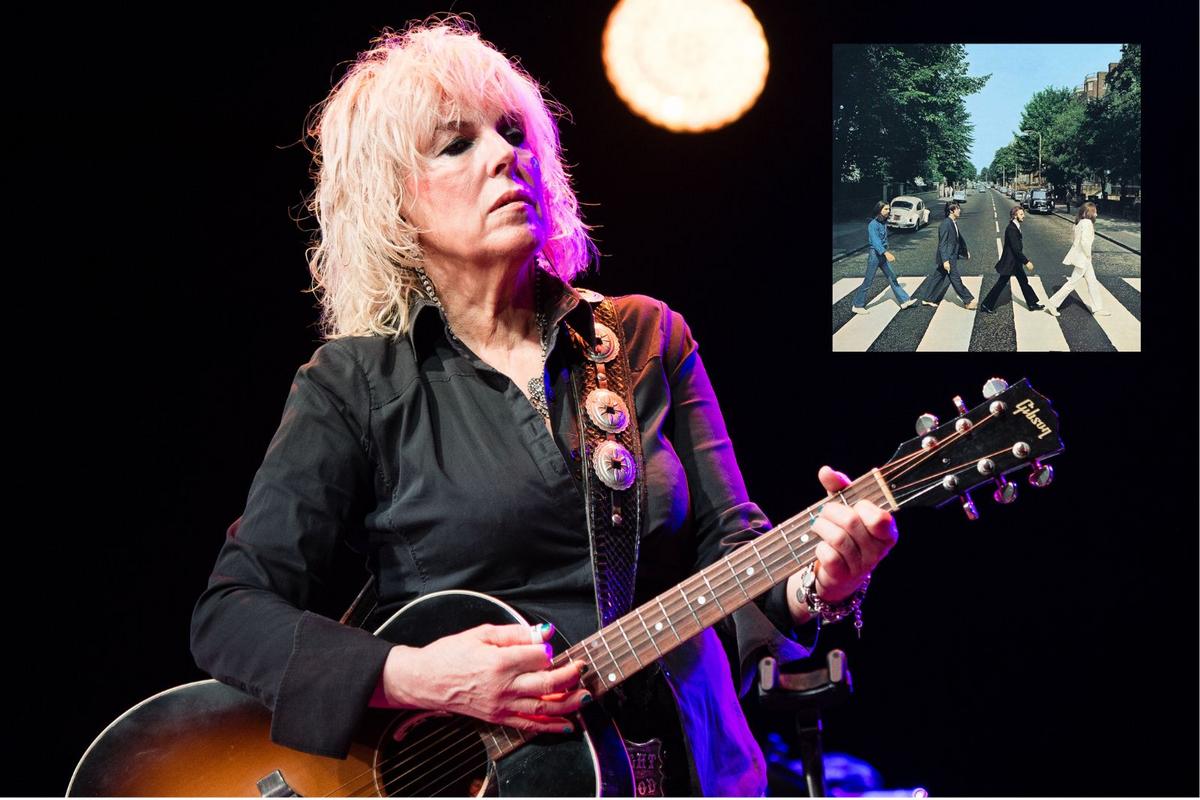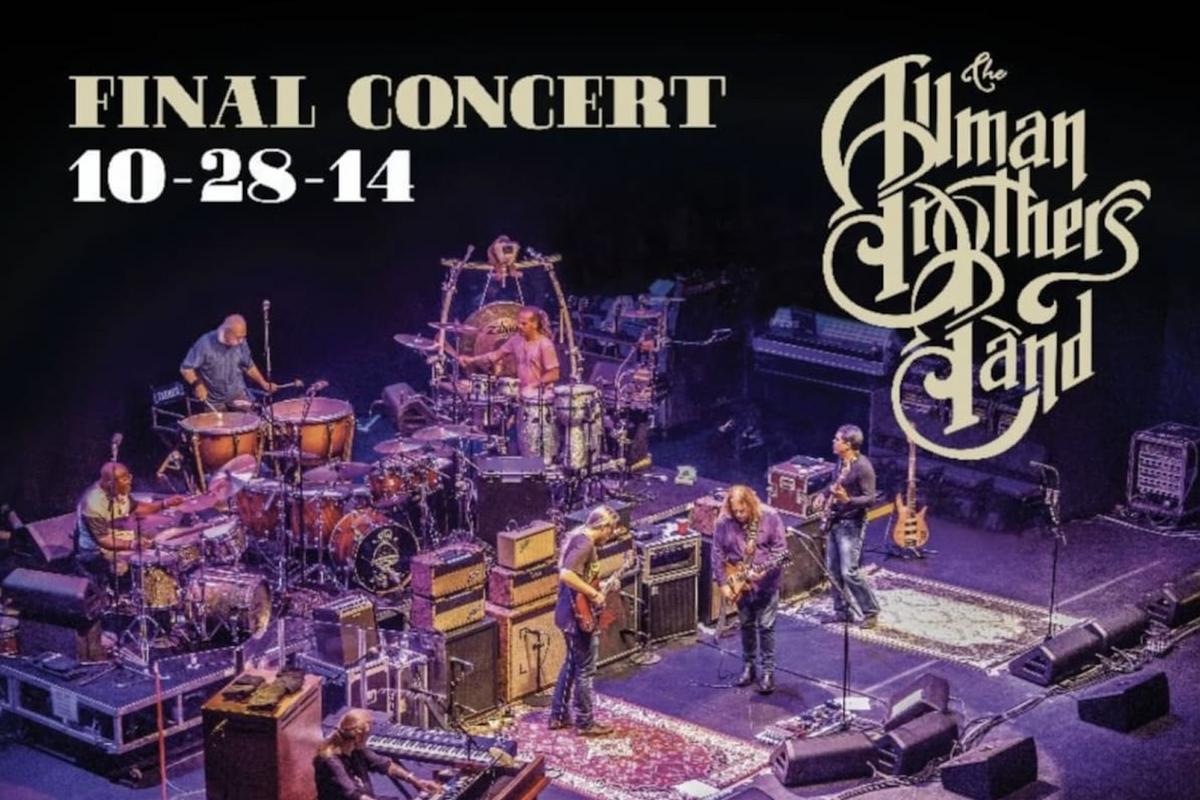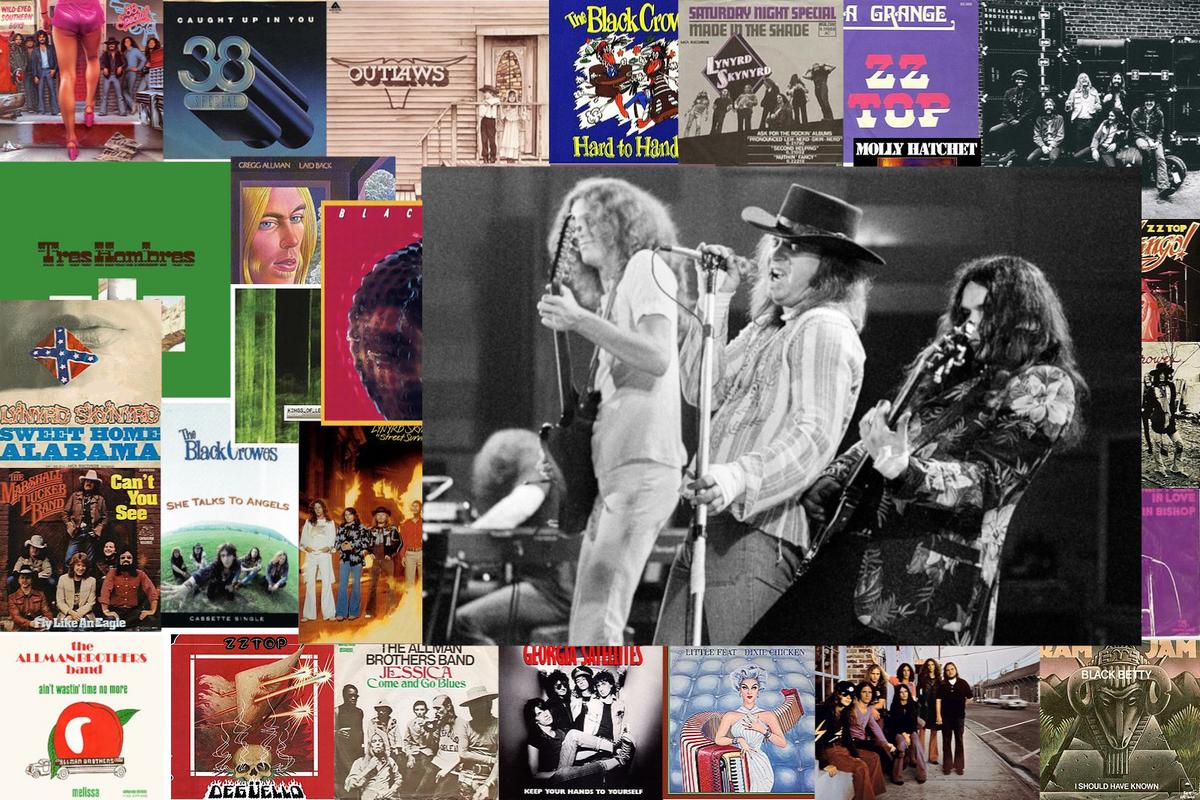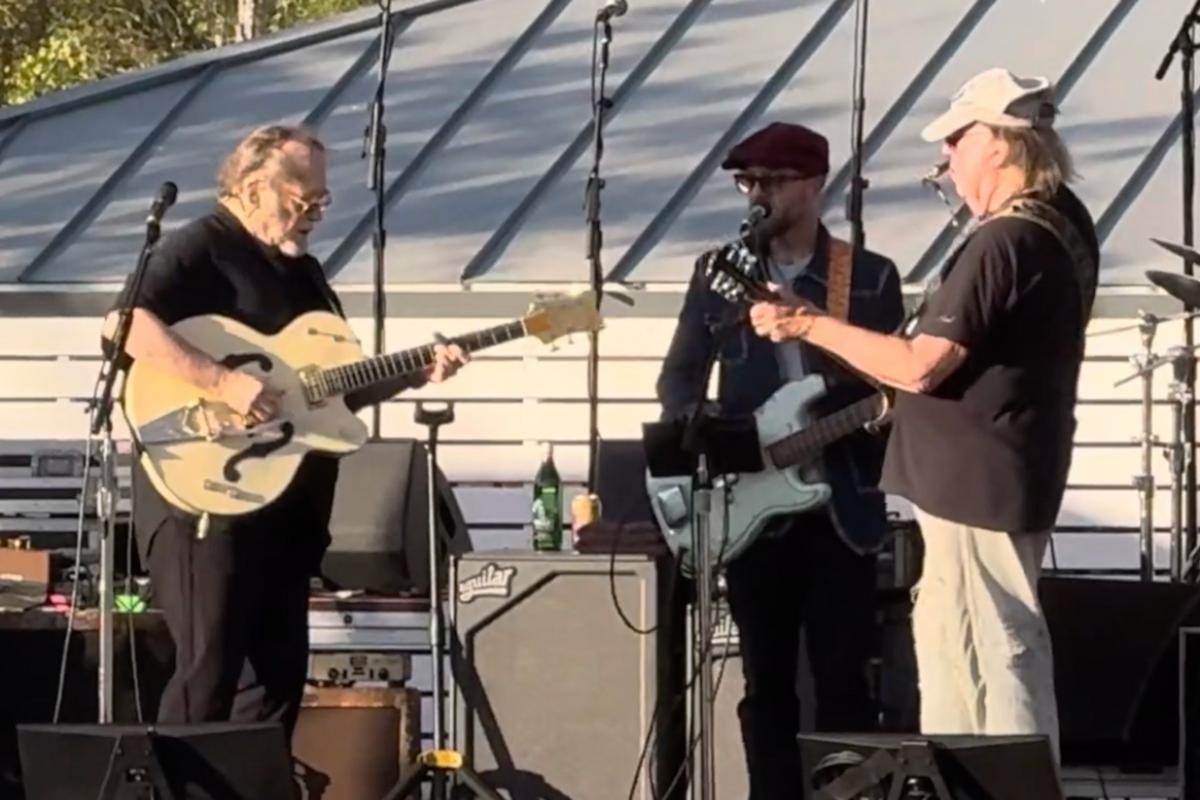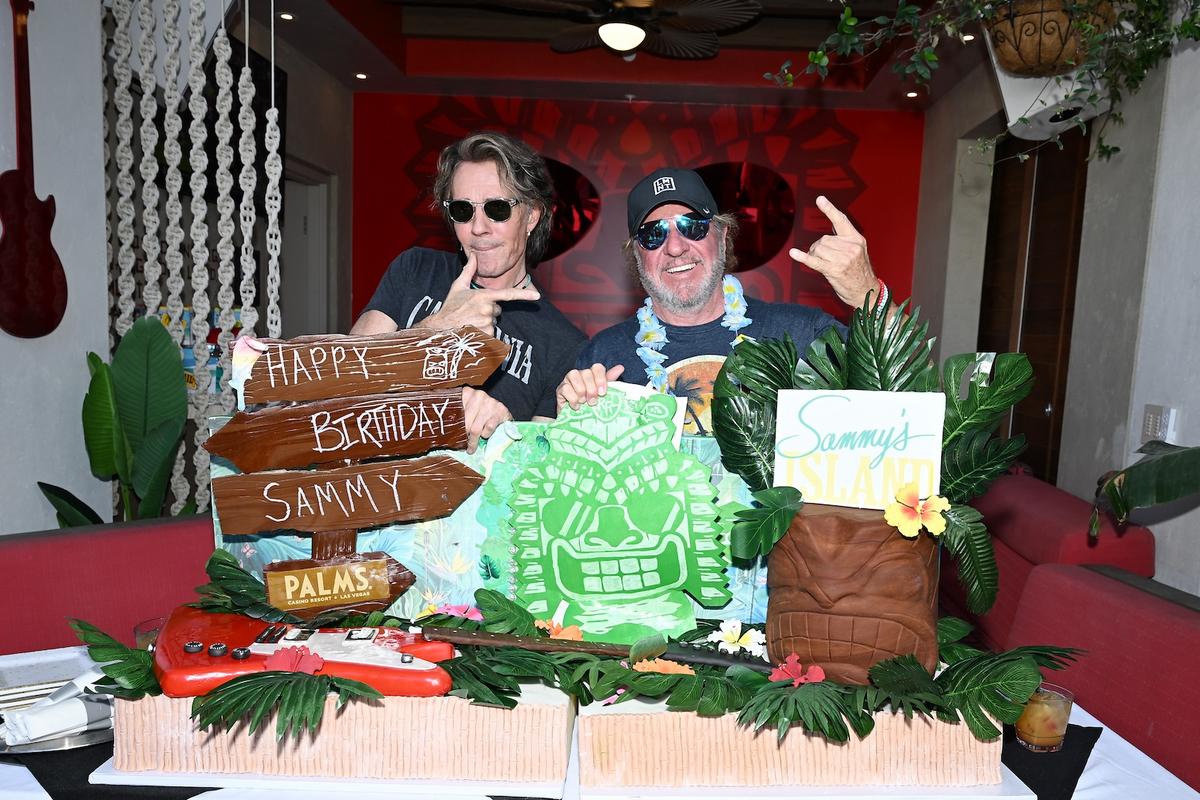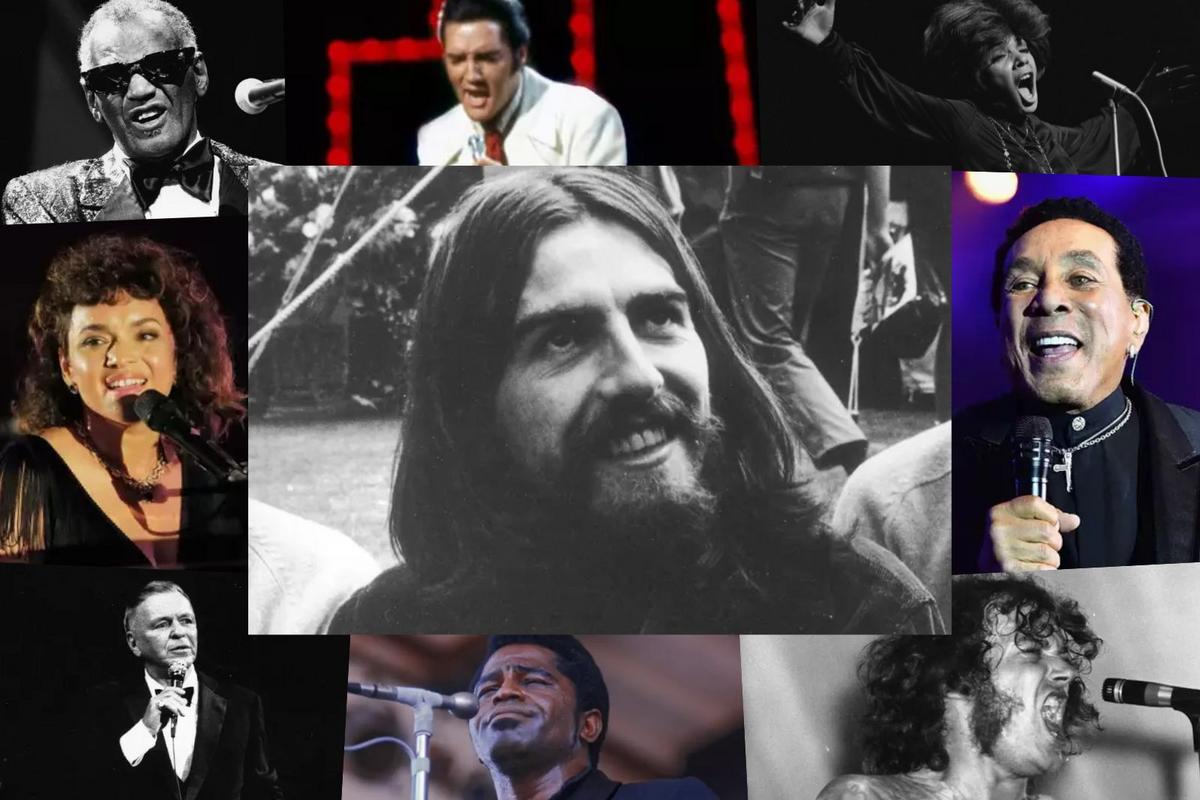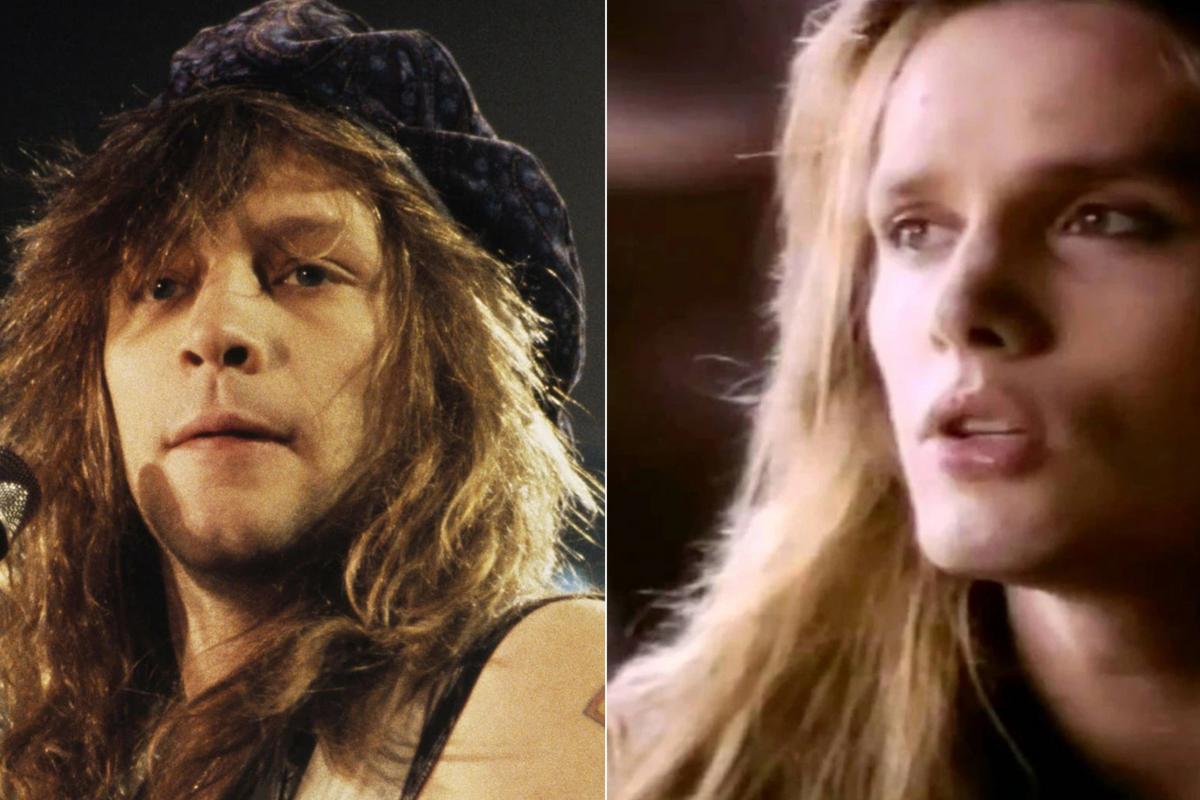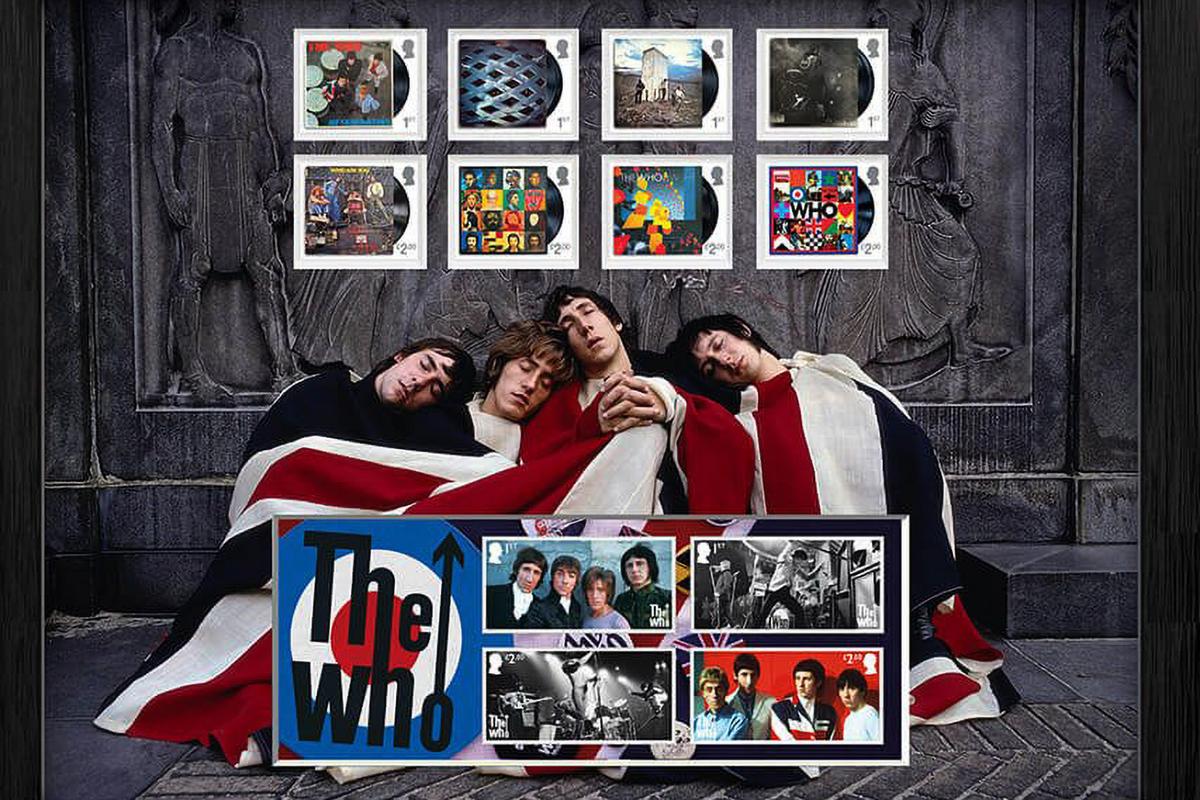Inspiration can strike from anywhere, but as many artists will tell you, there is a clear similarity between songwriting and making movies.
For those hoping to combine their love of music with a passion for cinema, there’s an entire section of the recording industry dedicated to film scoring and writing music specifically for the big screen. We have a whole list, in fact, of rock artists who also penned tunes for movies.
But it works the other way round, too — a film may inspire a songwriter to come up with something brand new, sometimes retelling the story their own way, or in other cases adding their own creative spin to the narrative.
Below, we’re taking a look at 45 Rock Songs Inspired by Movies.
1. “Bad Dance,” Sleater-Kinney
Movie: They Shoot Horses Don’t They?
Here’s the premise of 1969’s They Shoot Horses Don’t They? in a nutshell: it’s mid-Depression and a group of people set their sights on winning a dance marathon. (At the time it was released, the movie received nine Oscar nominations and won only one — Gig Young for Best Supporting Actor.) “I’ve seen that movie, like, 10 times. I find it unfortunately incredibly relevant in almost any era of corruption,” Carrie Brownstein of Sleater-Kinney explained to Mojo (via Songfacts), speaking about their 2019 song “Bad Dance.” “I was thinking of that film, that endless cycle of exhaustion. It’s probably why it sounds so denominated in a kind of vaudeville way.”
2. “Bad Moon Rising,” Creedence Clearwater Revival
Movie: The Devil and Daniel Webster
“I got the imagery [for “Bad Moon Rising”] from an old movie called The Devil and Daniel Webster (1941),” John Fogerty of CCR told Rolling Stone in 1993. “Basically, Daniel Webster makes a deal with Mr. Scratch, the devil. It was supposed to be apocryphal. At one point in the movie, there was a huge hurricane. Everybody’s crops and houses are destroyed. Boom. Right next door is the guy’s field who made the deal with the devil, and his corn is still straight up, six feet. That image was in my mind. I went, ‘Holy mackerel!'”
3. “Barbarella,” Scott Weiland
Movie: Barbarella
“Barbarella” from Scott Weiland‘s first solo album is titled after the 1968 sci-fi movie starring Jane Fonda, in which Fonda’s titular character must stop a mad scientist from destroying the world. There’s also a lyrical reference to the ’60s TV series Lost in Space: “Shoot the bad guys and I’ll gladly sing a tune for you / We’ll watch Lost in Space on my TV.”
4. “Beautiful Madness,” Robbie Robertson
Movie: Bigger Than Life
Robbie Robertson both wrote music for movies and found musical inspirations in movies. Such was the case when he saw 1956’s Bigger Than Life, a film about a man whose life falls apart due to his drug addiction. “I was watching it with an eye like, ‘Jesus, that guy’s crazy!’ At the same time…it probably was me saying, ‘I know how he feels!'” Robertson said to Uncut in 2019. “In the ’60s and ’70s, there was a definite madness in the air. At that time, Martin Scorsese and I would watch movies all the time. Bigger Than Life was one of them. I thought, ‘I like riding close to the edge. But I don’t want to go over.'”
5. “Beauty and the Beast,” Stevie Nicks
Movie: Beauty and the Beast
For a very brief time in the late ’70s, Stevie Nicks and her bandmate Mick Fleetwood were an item. She wound up writing the song “Beauty and the Beast” about their relationship, based on the 1946 film. “I first saw it on TV one night when Mick and I were first together, and I always thought of Mick as being sort of Beauty and the Beast-esque, because he’s so tall and he had beautiful coats down to here, and clothes made by little fairies up in the attic,” Nicks told Entertainment Weekly in 2019. “And also, it matched our story because Mick and I could never be. A, because Mick was married, and then divorced and that was not good, and B, because of Fleetwood Mac.”
6. “Between a Man and a Woman,” Kate Bush
Movie: The Godfather
Francis Ford Coppola’s world-famous 1972 film The Godfather is responsible for prompting Kate Bush to write 1989’s “Between a Man and A Woman.” “It’s about a relationship being a very finely balanced thing that can be easily thrown off by a third party,” she explained of the song to NME in 1989 (via The Quietus). “The whole thing really came from a line in The Godfather, during some family argument, when Marlon Brando says ‘Don’t interfere, it’s between a man and a woman.’ It’s exploring the idea of trying to keep a relationship together, how outside forces can break into it. … Rubbish, really, but I quite like the cello.”
7. “Big Daddy of Them All,” John Mellencamp
Movie: Cat on a Hot Tin Roof
Those with knowledge of the theater probably recognize the title of John Mellencamp‘s “Big Daddy of Them All” as stemming from the 1955 Tennessee Williams play Cat on a Hot Tin Roof, which was made into a movie in 1958 starring Elizabeth Taylor, Paul Newman, Burl Ives and more. Ives played the central character of Big Daddy both on stage and on screen. In the liner notes to 2010’s On the Rural Route 7609 box set, Mellencamp drew a comparison to his own life, writing: “This song was more or less a postcard to myself, saying, ‘You think Burl Ives wasn’t so nice? Guess what, John.'”
8. “Chain Saw,” Ramones
Movie: The Texas Chainsaw Massacre
It’s pretty obvious where Ramones got the inspiration for 1976’s “Chain Saw.” The Texas Chainsaw Massacre, directed by Tobe Hooper, came out two years prior, and though it received mixed reviews, it wound up an incredibly profitable release. “I loved The Texas Chainsaw Massacre, it really scared me,” Johnny Ramone once said. “I liked it enough that we used it as a song title.”
9. “Chance Meeting,” Roxy Music
Movie: Brief Encounter
“Chance Meeting” is actually just one of several songs on Roxy Music‘s debut, self-titled album that has to do with movies. In this case, it was inspired by the 1945 film Brief Encounter starring Celia Johnson and Trevor Howard. (There’s also “The Bob,” which took its title from 1968’s Battle of Britain.)
10. “Chinese Democracy,” Guns N’ Roses
Movie: Kundun
Guns N’ Roses first started performing the song “Chinese Democracy” back in 2001, a whole seven years before it became the title track to the album Chinese Democracy. When the band played it live for the first time, Axl Rose explained that it had been written after seeing the 1997 movie Kundun (directed by Martin Scorsese) about the Dalai Lama. “It’s not necessarily pro or con about China,” he said. “It’s just that right now China symbolizes one of the strongest, yet most oppressive countries and governments in the world. And we [Americans] are fortunate to live in a free country. And so in thinking about that it just kinda upset me, and we wrote this little song called ‘Chinese Democracy.'”
11. “Chosen Ones,” Megadeth
Movie: Monty Python and the Holy Grail
At first glance, the names Megadeth and Monty Python may seem like they have nothing to do with one another. But actually, the 1985 song “Chosen Ones” from Killing Is My Business… and Business Is Good! borrowed from the 1975 film Monty Python and the Holy Grail. Dave Mustaine did some more borrowing from the same movie when he included the line “bring out your dead” in the title track to 2016’s The Sick, The Dying…And The Dead!
12. “Cinderella Man,” Rush
Movie: Mr. Deeds Goes to Town
Rush‘s “Cinderella Man” was based off one of Geddy Lee‘s personal favorite films: 1936’s Mr. Deeds Goes to Town. “I was a big film guy as a teenager, and as a young man, I was really a film buff – I watched films all the time,” he said to Louder in 2019. “I studied directors because I sort of secretly wanted to be a film director. It was just one of those dreams for when I grow up. And when I realized that most directors have to be part megalomaniac, I think I sort of went off that idea. … So that song is really just about that movie and the kind of themes that movie resonated with.”
13. “Debaser,” Pixies
Movie: Un Chien Andalou
Black Francis of Pixies didn’t just dream up the line in “Debaser” about “slicing up eyeballs” — he literally saw the scene in the 1929 short film by Luis Bunuel and Salvador Dali called Un Chien Andalou, in which a woman’s eye is cut with a razor. “I guess the only thing I put in the lyric that could be considered an original concept was that I just echoed the sentiment of the filmmakers,” Francis explained to Louder in 2021. “Which was: ‘Hey, we’re just doing what we wanna do. It doesn’t make sense and it might be shocking, but to me it’s normal. I am debasing the norm, I am breaking down the societal norm and cutting it up to come up with something surreal and jarring.’ That was the sentiment of the people who were making those films: I am a debaser.”
14. “Don’t Go Away Mad (Just Go Away),” Motley Crue
Movie: Heartbreak Ridge
As Motley Crue bassist Nikki Sixx said to Rolling Stone in 2009, the title for 1989’s “Don’t Go Away Mad (Just Go Away)” came from a film, though at the time he could not recall which one. “I saw that line in a movie somewhere, I can’t even remember what movie,” he said. “I thought, ‘Great idea for a song.’ A little tongue-in-cheek. A little sarcasm there.” Further research has revealed Sixx was likely referring to 1986’s Heartbreak Ridge.
15. “Electric Barbarella,” Duran Duran
Movie: Barbarella
Here’s a second song inspired by 1986’s Barbarella: Duran Duran‘s “Electric Barbarella.” And as if that wasn’t enough, the band literally got their name from one of the film’s characters, Dr. Durand Durand. (Fun fact: it was with this 1997 track that Duran Duran became the first major label recording artist to sell a single as a digital download on the internet.)
16. “Enough Space,” Foo Fighters
Movie: Arizona Dream
Foo Fighters‘ “Enough Space” is purportedly about the 1993 film Arizona Dream, starring Johnny Depp, Jerry Lewis and Faye Dunaway.
17. “Ever Fallen in Love (With Someone You Shouldn’t’ve),” Buzzcocks
Movie: Guys and Dolls
Like others on this list, Pete Shelley of Buzzcocks perked up when he heard an ear-catching line in a film. “We were in the Blenheim Guest House with pints of beer, sitting in the TV room half-watching Guys and Dolls,” he told Edinburgh News in 2018. “One of the characters, Adelaide, is saying to Marlon Brando’s character, ‘Wait till you fall in love with someone you shouldn’t have.’ “I thought, ‘fallen in love with someone you shouldn’t have?’ Hmm, that’s good.” He wrote the lyrics to 1978’s “Ever Fallen in Love (With Someone You Shouldn’t’ve)” the next day.
18. “Eyes Without a Face,” Billy Idol
Movie: Eyes Without a Face
“I’ve always had a fascination with the titles of horror films,” Billy Idol wrote in his memoir Dancing With Myself, referring to his song “Eyes Without a Face.” It took its title from a 1960 French film Les Yeux sans visage (Eyes Without a Face). Idol went on to describe the film as being about “a brilliant plastic surgeon who vows to restore the face of his daughter, who has been horribly disfigured in a car accident. This vow leads him to murder, as he sets out collecting the facial features of his victims, which he then grafts onto his daughter’s hideous countenance, attempting to restore her beauty. Her staring eyes remain the only thing visible.”
19. “Godzilla,” Blue Oyster Cult
Movie: Godzilla
The title says it all — even the sleeve in which this Blue Oyster Cult single came featured a still from the 1966 film Godzilla vs. the Sea Monster. Interestingly, despite being one of the most popular songs in their entire catalog, “Godzilla” was not a chart hit.
20. “Heartlight,” Neil Diamond
Movie: E.T. the Extra Terrestrial
Apparently there is such a thing as being too inspired. To be fair, nowhere in the lyrics to Neil Diamond‘s 1982 song “Heartlight” does he mention E.T. the character or the movie title E.T. the Extra-Terrestrial (1982), but he did write the song after seeing a screening of the film with his friends Carole Bayer Sager and Burt Bacharach. It’s not hard to put two and two together considering the adorable little alien’s heart begins to glow at the end of the movie. Years later, Diamond had to settle a lawsuit out of court with MCA/Universal, who felt the songwriter had stepped a bit too close to the narrative they owned.
21. “Imitation of Life,” R.E.M.
Movie: Imitation of Life
Sometimes you don’t actually have to see a movie to be inspired by it. Such was the case with R.E.M.‘s “Imitation of Life,” which took its title from the 1959 film of the same name. In the liner notes to In Time: The Best of R.E.M. 1988–2003, guitarist Peter Buck admitted none of the band members had watched the film. “I thought at the time that the title was a perfect metaphor for adolescence,” he said. “Unfortunately I have come to believe that it is a perfect metaphor for adulthood, too. But that’s another story.”
22. “Johnny Thunder,” The Kinks
Movie: The Wild One
Ray Davies found inspiration for the Kinks’ “Johnny Thunder” in the form of the 1953 film The Wild One starring Marlon Brando, which had been banned in Britain up until about a month before the song was released. “I saw him as a Neal Cassady type character,” Davies said to Rolling Stone in 2018. “All rebels look like Marlon Brando on a motorbike.”
23. “Juliet of the Spirits,” The B-52’s
Movie: Giulietta Degli Spiriti
In Italian, it’s Giulietta degli spiriti, which translates to Juliet of the Spirits, a title the B-52’s used for one of the songs on their 2008 album Funplex.
24. “Man on the Edge,” Iron Maiden
Movie: Falling Down
Iron Maiden has a number of songs inspired by films, several of which appear on this list. “Man on the Edge” from 1995’s The X Factor is based on the 1993 film Falling Down, starring Michael Douglas. “A lot of things happened in that movie,” singer Blaze Bayley once explained to Songfacts. “One of the key lyrics is ‘cannibal state,’ where the system of government consumes the individual and the materialistic society consumes the individual and digests him and spits him out, so his identity is completely gone.”
25. “Me and Bobby McGee,” Janis Joplin
Movie: La Strada
Janis Joplin is the name most closely associated with “Me and Bobby McGee,” but it was actually Kris Kristofferson behind the birth of the 1971 song. “For some reason, I thought of La Strada, this [Federico] Fellini film, and a scene where Anthony Quinn is going around on this motorcycle and Giulietta Masina is the feeble-minded girl with him, playing the trombone,” Kristofferson told Wide Open Country in 2022. “He got to the point where he couldn’t put up with her anymore and left her by the side of the road while she was sleeping.” This story became the essence of “Me and Bobby McGee.”
26. “Moonlight (A Vampire’s Dream),” Stevie Nicks
Movie: Twilight
Stevie Nicks is often likened to a witch (the cool, mysterious, not evil kind), but what about vampires? Look no further than “Moonlight (A Vampire’s Dream)” from 2011’s In Your Dreams. Nicks wrote much of the song after watching Twilight. “The second verse,” she later explained to AOL’s Spinner (via Songfacts), “‘She’s lonely, lost, and disconnected’ – was written in Brisbane right after I saw the movie. So the song, really, is ancient times up to today. The chorus – ‘It’s strange, she runs from the ones she can’t keep up with’ – is all about the love affair between Bella and Edward.”
27. “Moonlight Shadow,” Mike Oldfield
Movie: Houdini
“Moonlight Shadow” is Mike Oldfield’s most successful single, with vocals by the Scottish singer Maggie Reilly. It was reportedly inspired by the 1953 Tony Curtis movie Houdini.
28. “Motorpsycho Nightmare,” Bob Dylan
Movie: Psycho
As its title suggests, Bob Dylan‘s “Motorpyscho Nightmare” draws from Alfred Hitchcock’s Psycho, particularly with its lines about a certain famous murder scene — “She said, ‘Would you like to take a shower? / I’ll show you up to the door’ / I said, ‘Oh, no! no! / I’ve been through this before.'”
29. “Nebraska,” Bruce Springsteen
Movie: Badlands
Bruce Springsteen was reportedly inspired to pen the song “Nebraska” after seeing the 1973 crime drama Badlands, starring Martin Sheen and Sissy Spacek. The film was loosely based on the real-life 1958 murder spree committed by Charles Starkweather and his girlfriend Caril Ann Fugate, who killed 10 people in the span of just a few weeks.
30. “Night Moves,” Bob Seger
Movie: American Graffiti
Bob Seger‘s “Night Moves” is not technically about a movie, but it was still very much inspired by one. “The album as well as the song were inspired by [1973’s] American Graffiti,” Seger said to Mix in 2001. “I came out of the theater thinking, ‘Hey, I’ve got a story to tell, too! Nobody has ever told about how it was to grow up in my neck of the woods.'”
31. “One,” Metallica
Movie: Johnny Got His Gun
Metallica‘s “One” tells a gruesome story of a terribly wounded soldier who has lost his arms, legs and sight. But the band didn’t conjure that up entirely out of their own heads — they were inspired by the 1971 anti-war film Johnny Got His Gun, clips from which Metallica used in the music video for “One,” seen below.
32. “Pretty Baby,” Blondie
Movie: Pretty Baby
The 1978 movie Pretty Baby starring Brooke Shields, Keith Carradine and Susan Sarandon got its title from the Tony Jackson song of the same name, which was included on the film’s soundtrack. In turn, Pretty Baby inspired another song with the same name, this time by Blondie and released on 1978’s Parallel Lines.
33. “Space Oddity,” David Bowie
Movie: 2001: Space Odyssey
While it is true that David Bowie‘s 1969 song “Space Oddity” was rush-released to coincide with the Apollo 11 moon landing, that groundbreaking event was not what had inspired Bowie to pen the number. That distinction goes to the Stanley Kubrick film, 2001: A Space Odyssey. “I was out of my gourd anyway, I was very stoned when I went to see it [Space Odyssey], several times, and it was really a revelation to me,” Bowie said to Performing Songwriter in 2003. “It got the song flowing.”
34. “The Clansman,” Iron Maiden
Movie: Braveheart
“The Clansman” by Iron Maiden was written about the plight of Scottish clans fighting for their independence from the English, as inspired by the 1995 movie Braveheart starring and directed by Mel Gibson. Or, in the words of Steve Harris in Run to the Hills: The Official Biography of Iron Maiden, it’s “about what it’s like to belong to a community that you try and build up and then you have to fight to stop having it taken away from you.”
35. “The Crimson Ghost,” Misfits
Movie: The Crimson Ghost
Long before the Misfits formed in 1977, there was the 1946 film The Crimson Ghost. It was from this film’s titular villain that the Misfits borrowed their skeletal iconography. They even wrote a song titled “Crimson Ghost” and included it on their 1997 album American Psycho.
36. “The Stuff That Dreams Are Made Of,” Carly Simon
Movie: The Maltese Falcon
If the title of Carly Simon‘s 1987 song “The Stuff That Dreams Are Made Of” sounds familiar to you, it may be because you’ve seen the 1941 film The Maltese Falcon starring Humphrey Bogart. It’s Bogart’s character, the detective Sam Spade, who uses that line, describing the jewel-encrusted falcon statuette as “the stuff that dreams are made of.”
37. “The Union Forever,” The White Stripes
Movie: Citizen Kane
Jack White loves Citizen Kane (1941). At one point, he was trying to learn to play one of the songs from the film, “It Can’t Be Love,” and wound up writing an entirely new song with lyrics heavily inspired by the movie’s dialog. “I was trying to play it on guitar,” he explained to Rolling Stone, “and I went through the film and started writing down things that might rhyme and make sense together.” That song became “The Union Forever,” which appeared on the White Stripes‘ 2001 album White Blood Cells. (Two years after the song was released, Warner Bros. considered filing a copyright-infringement suit against the White Stripes for borrowing material as liberally as they did, but it never came to pass.)
38. “Tin Man,” America
Movie: The Wizard of Oz
The Wizard of Oz (1939) is famous for its phenomenal use of Technicolor — a metaphor, really, for the difference between one’s old life and their new one. This was not lost on Dewey Bunnell of America when he wrote the song “Tin Man,” released in 1974. “It was my favorite movie as a kid and it’s still one of my Top Ten. I probably even would go so far that if someone said ‘What’s your favorite movie of all time?’ I might go there,” he told American Songwriter in 2021. “The song is like surrealism, which was a genre of art that was always mesmerizing for me. There’s the whole psychedelic thing, coming out of the ’60s, the Woodstock generation, opening your eyes, expanding your mind and looking at things differently. We really did, we were a straight culture out of the ’50s. It was all black and white.”
39. “Total of the Eclipse of the Heart,” Bonnie Tyler
Movie: Nosferatu
Before Bonnie Tyler got her hands on it, “Total Eclipse of the Heart” was written by Jim Steinman as an ode to a classic icon of horror film: Nosferatu. The silent movie, which was based on Bram Stoker’s 1897 novel Dracula, was released in 1922 under the title Nosferatu: A Symphony of Horror. At the time that Steinman wrote “Total Eclipse of the Heart,” he had been planning on making a musical adaption of Nosferatu.
40. “Walk This Way,” Aerosmith
Movie: Young Frankenstein
It was during a break from recording 1975’s Toys in the Attic at Record Plant in New York City that Aerosmith found some new inspiration. Most of the band, along with producer Jack Douglas, had gone down to a movie theater in Times Square to see the movie Young Frankenstein starring Gene Wilder — Joe Perry, who had already seen the film, stayed behind. “When the guys returned, they were throwing lines back and forth from the film,” Perry recalled to The Wall Street Journal in 2014. “They were laughing about Marty Feldman greeting Gene Wilder at the door of the castle and telling him to follow him. ‘Walk this way,’ he says, limping, giving his stick to Wilder so he can walk that way, too. While all this was going on, Jack stopped and said, ‘Hey, ‘walk this way’ might be a great title for the song.’ We agreed.”
41. “We’ve Got Tonite,” Bob Seger
Movie: The Sting
Bob Seger’s “We’ve Got Tonight” began its life as a song called “This Old House.” But things changed when he saw the 1973 film The Sting. In one scene, Robert Redford’s character tells a waitress that he feels as though nobody really knows him. “That just hit me real hard,” Seger told the Detroit Free Press in 1994. “The next day I wrote ‘We’ve Got Tonight,’ this song about two people who say ‘I’m tired. It’s late at night. I know you don’t really dig me, and I don’t really dig you, but this is all we’ve got, so let’s do it.’ The sexual revolution was still going strong then.”
42. “Where Eagles Dare,” Iron Maiden
Movie: Where Eagles Dare
Here’s a sort of two for the price of one situation thanks to Iron Maiden. Their 1983 album Piece of Mind includes not just one but two songs inspired by films: “Where Eagles Dare” based on the 1968 film of the same title and “Quest of Fire” based on the 1981 film, again of the same title.
43. “Why Didn’t Rosemary?” Deep Purple
Movie: Rosemary’s Baby
Like Aerosmith above, Deep Purple went to the cinema one day and came back with song inspiration. In their case, the film was 1968’s Rosemary’s Baby starring Mia Farrow. At that time, the use of the contraceptive pill among both American and British women was steadily rising, having been introduced into the U.S. and U.K. markets in 1960 and 1961 respectively. In “Why Didn’t Rosemary” Deep Purple cheekily asked the question: “Why didn’t Rosemary ever take the pill?“
44. “Year of the Cat,” Al Stewart
Movie: Casablanca
Here’s another song inspired by Casablanca: Al Stewart’s “Year of the Cat.” The song’s opening lines came to Stewart after watching the film — “On a morning from a Bogart movie, in a country where they turn back time / You go strolling through the crowd like Peter Lorre contemplating a crime.“
45. “2HB,” Roxy Music
Movie: Casablanca
There’s one more Casablanca-inspired song to cover, and that’s Roxy Music’s “2HB,” which stands for “To Humphrey Bogart.” It includes, as one of the lyrics, the actor’s famous line “Here’s looking at you, kid.” Bryan Ferry recorded the song again for his 1976 solo album Let’s Stick Together.
The Best Rock Movie From Every Year
A look at the greatest biopics, documentaries, concert films and movies with awesome soundtracks.
Gallery Credit: Ultimate Classic Rock Staff
